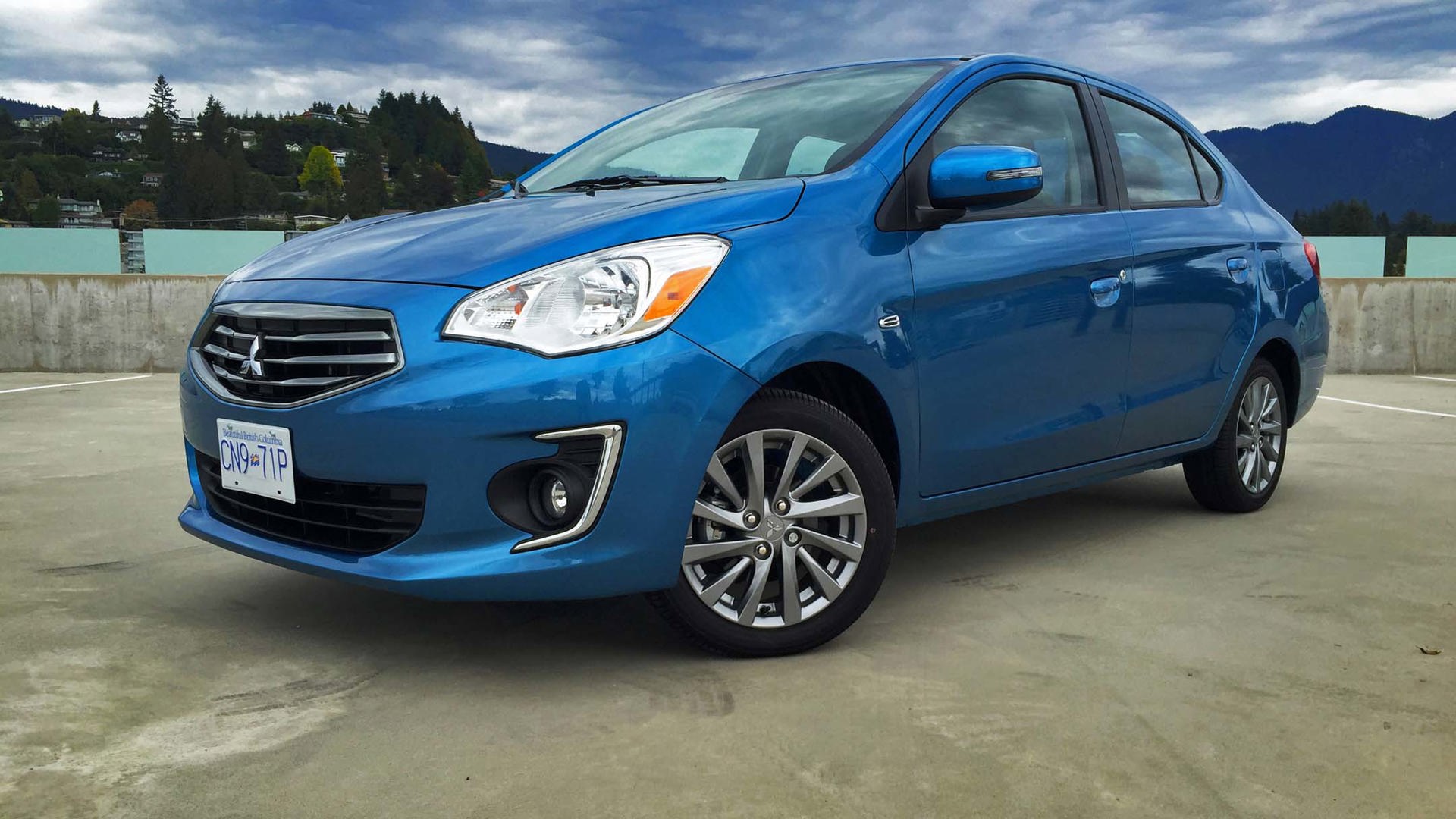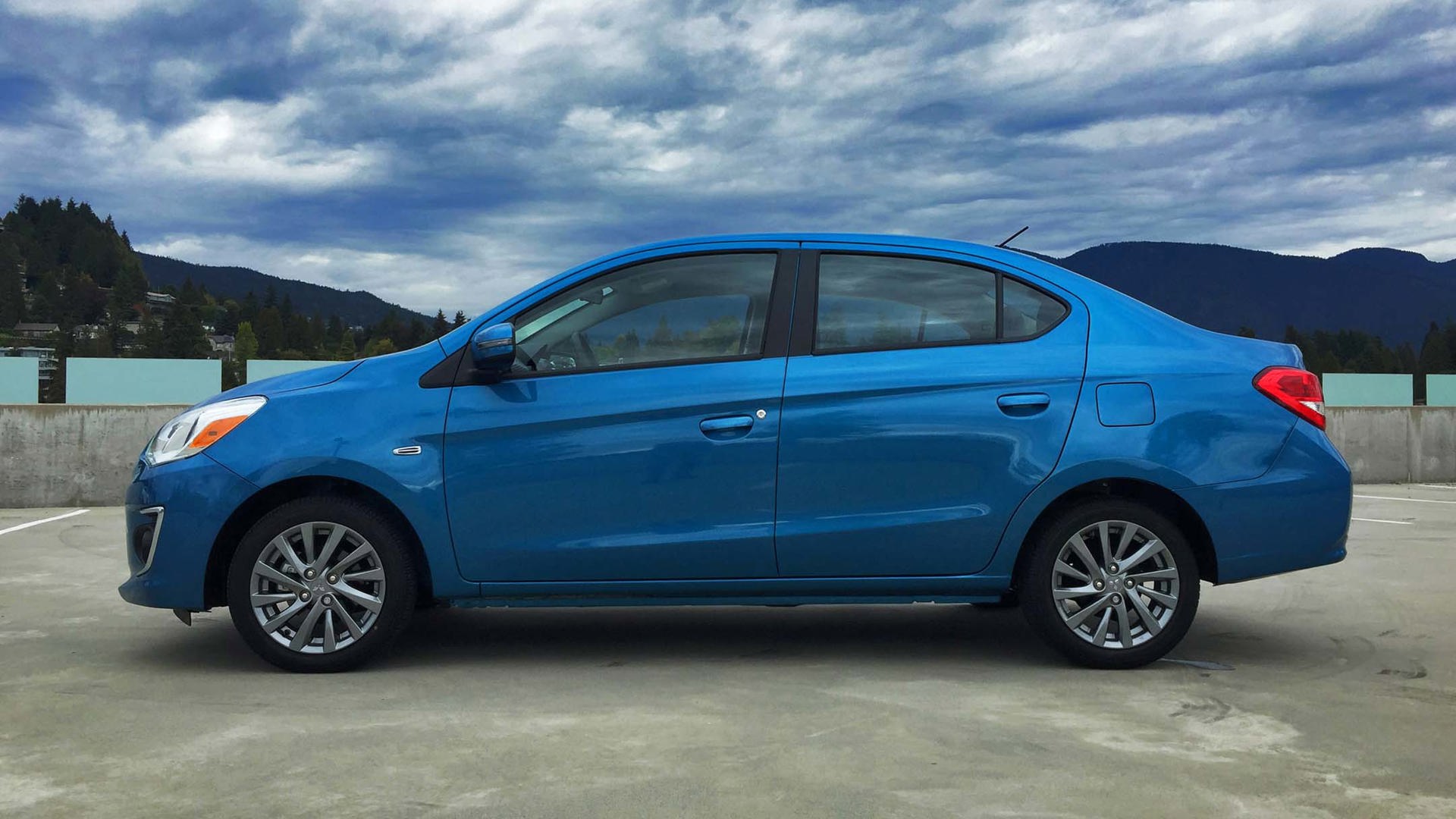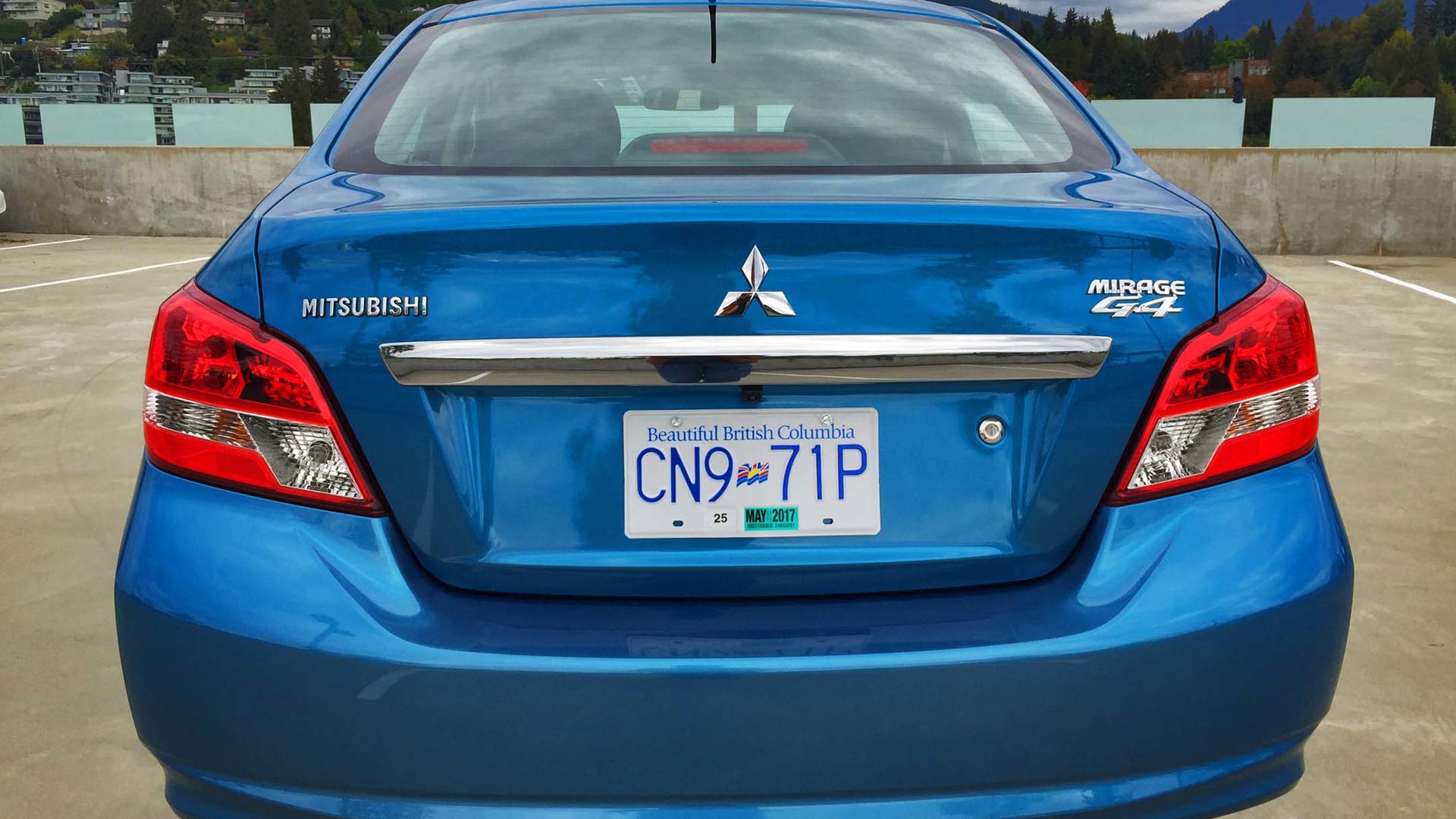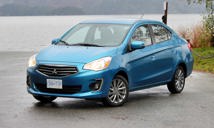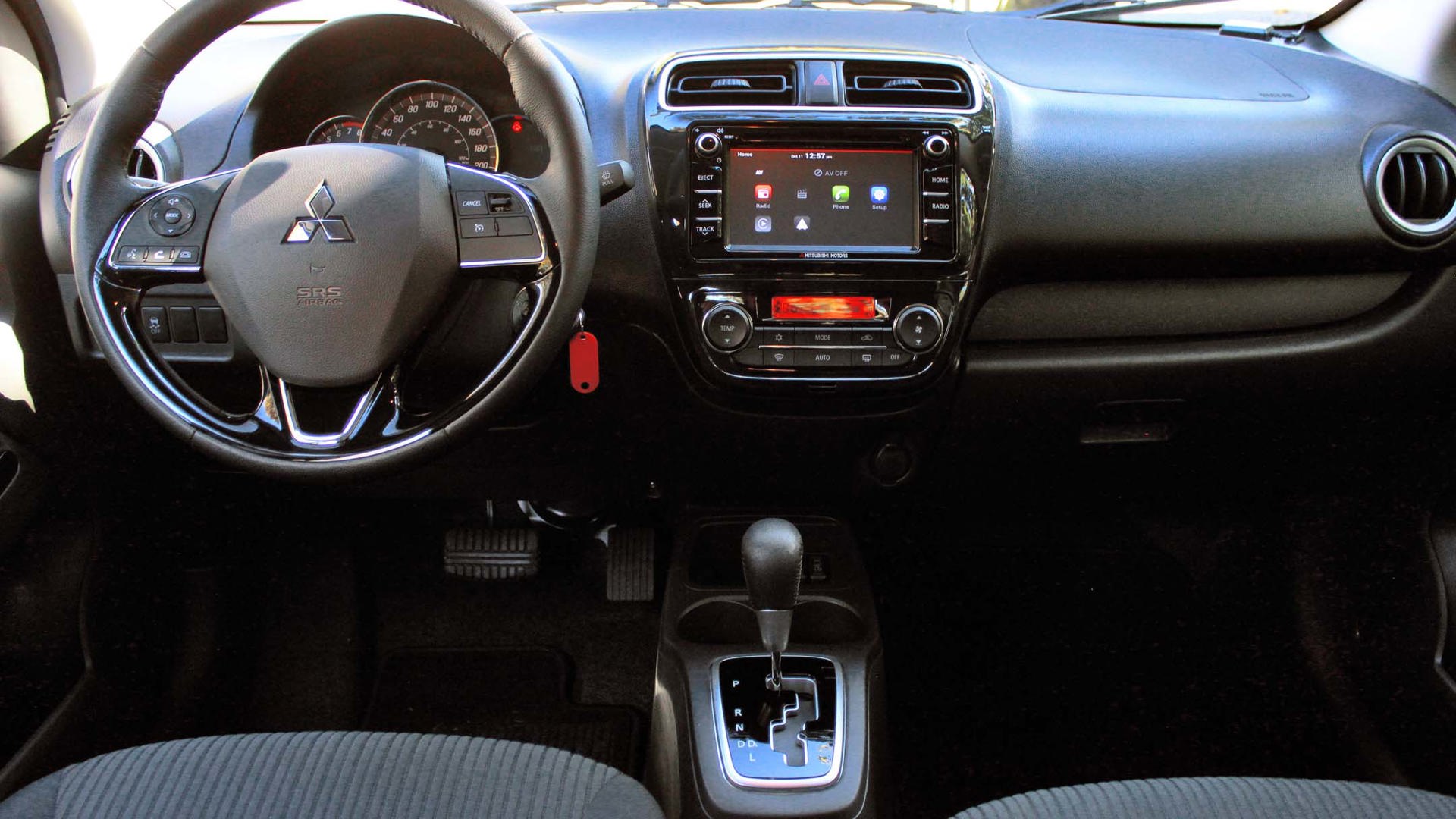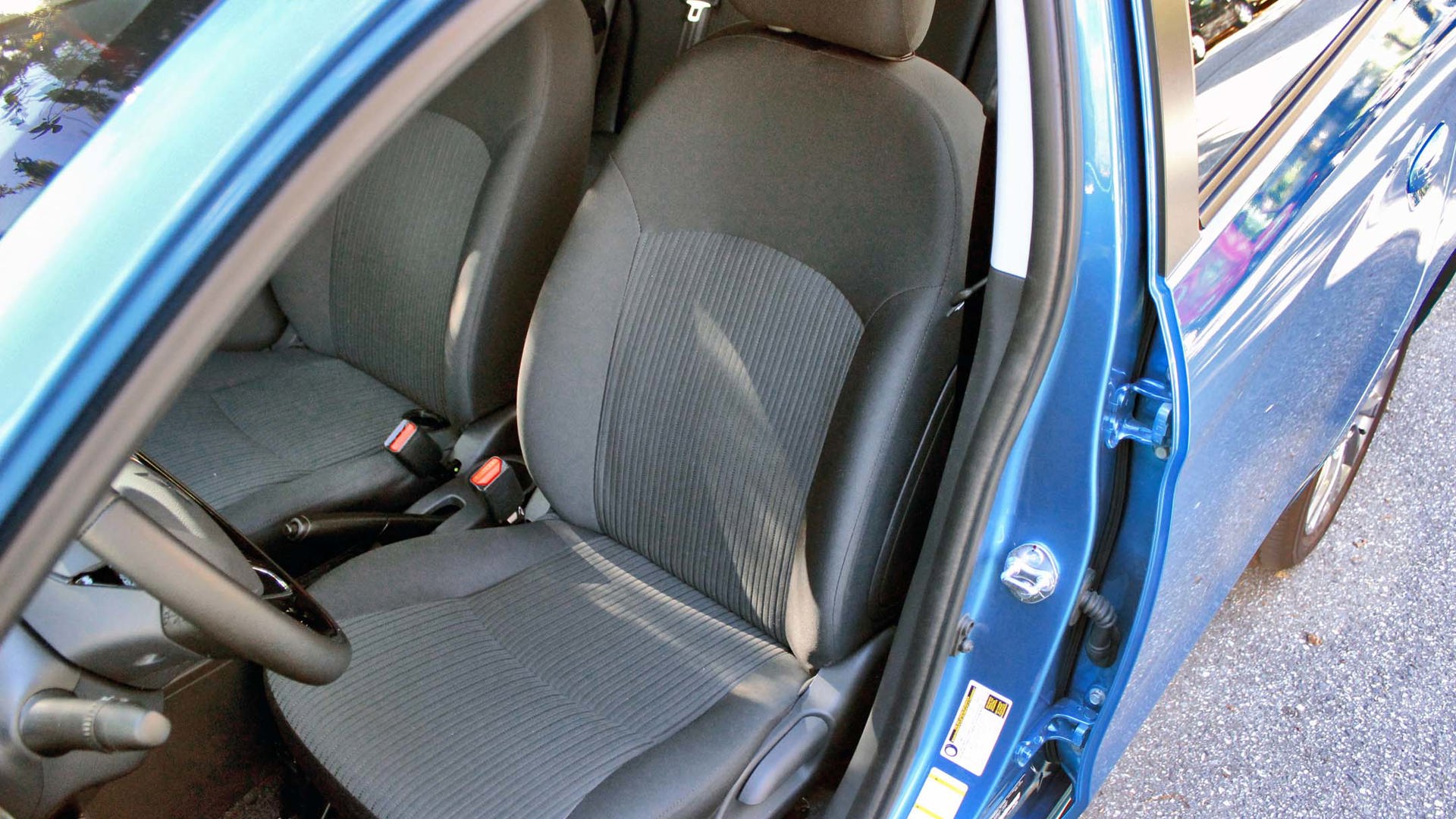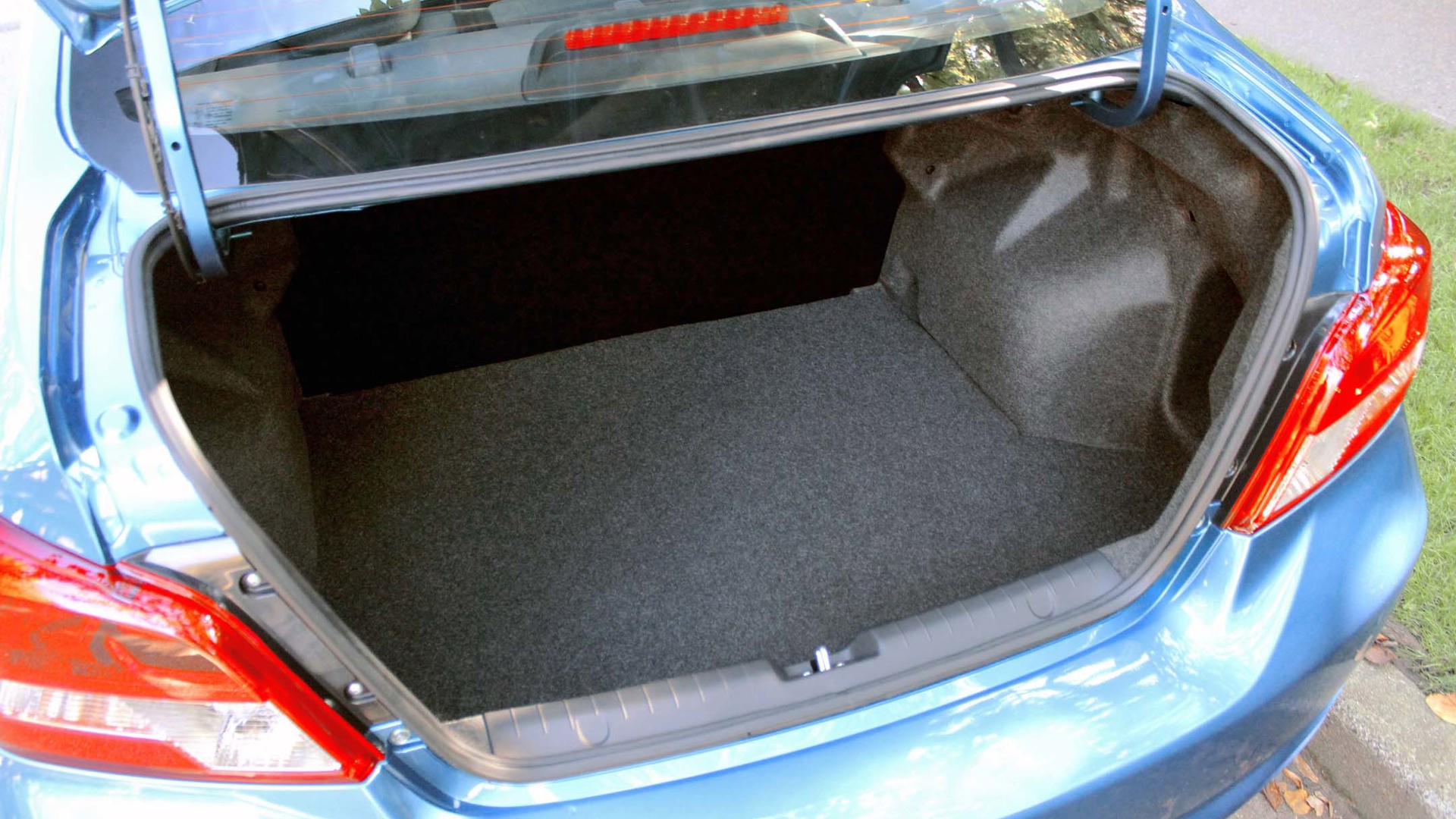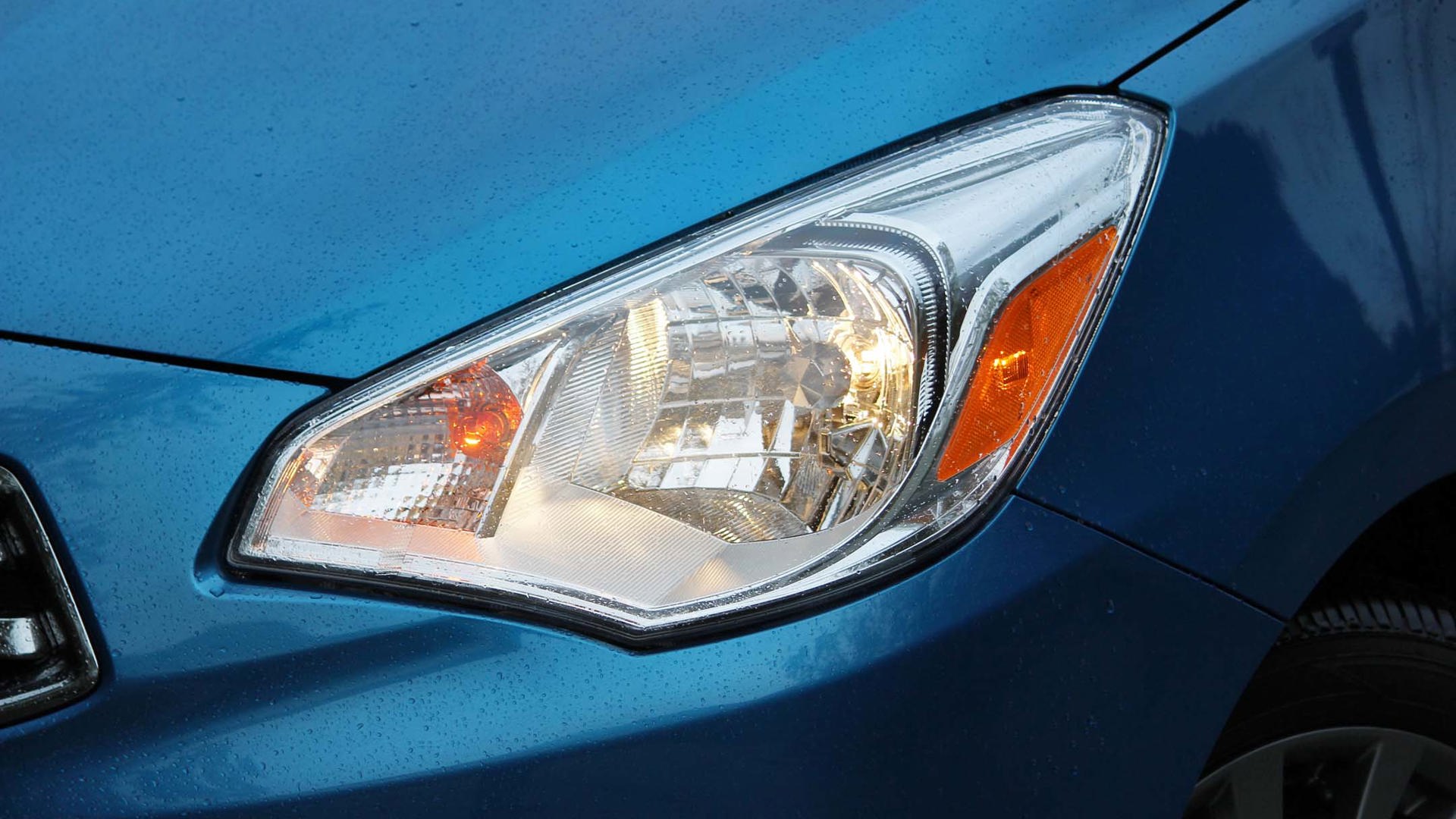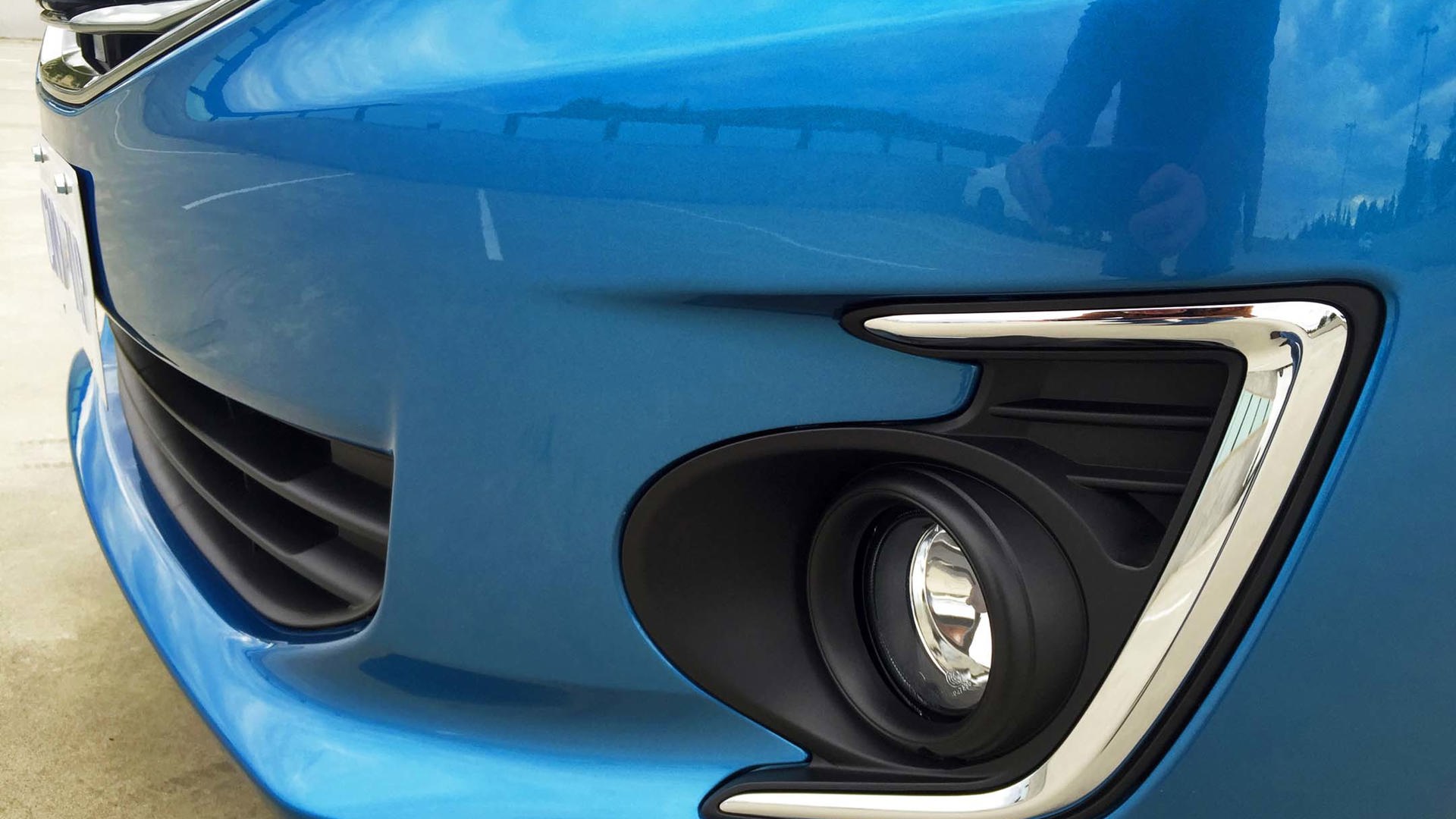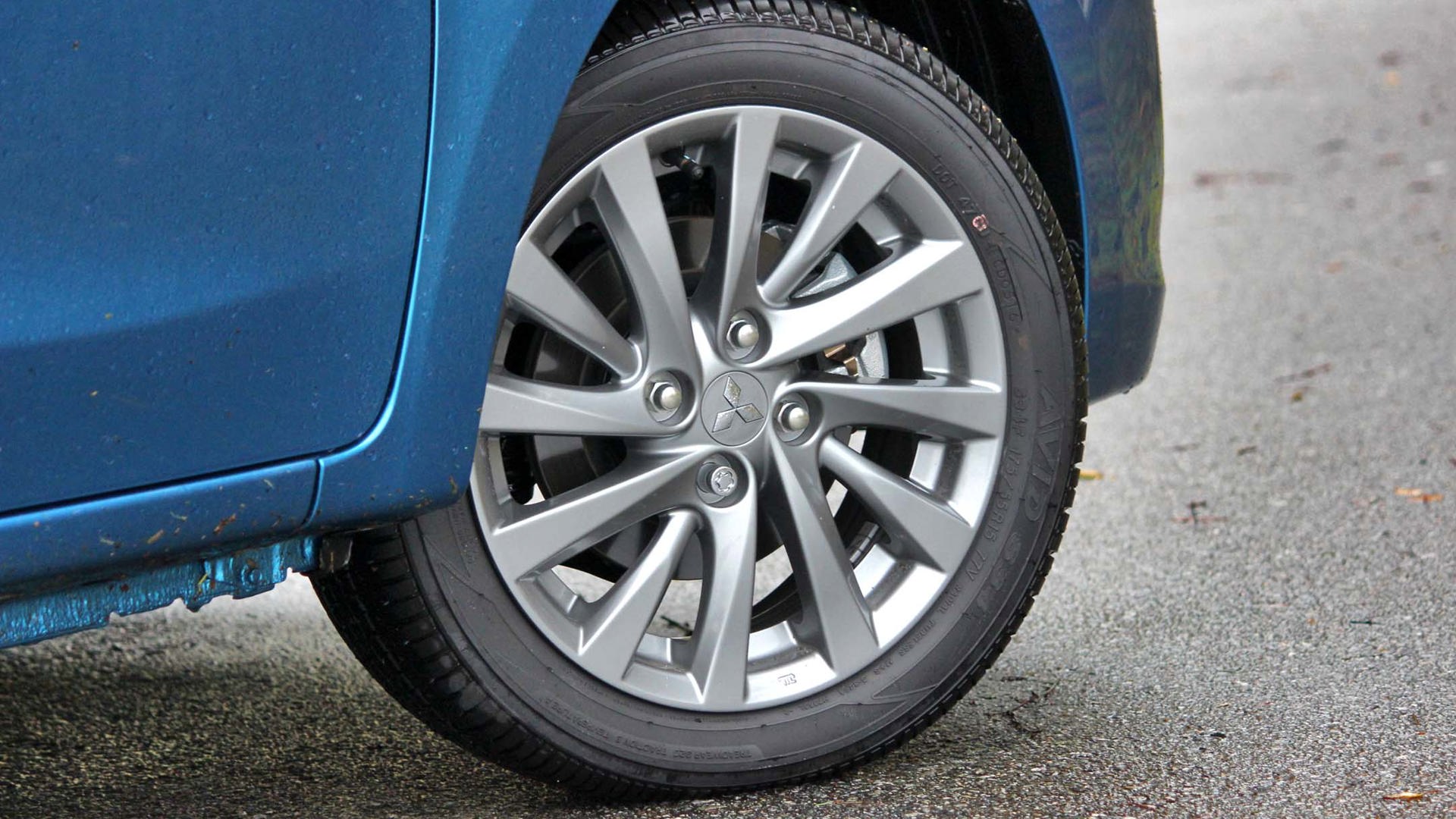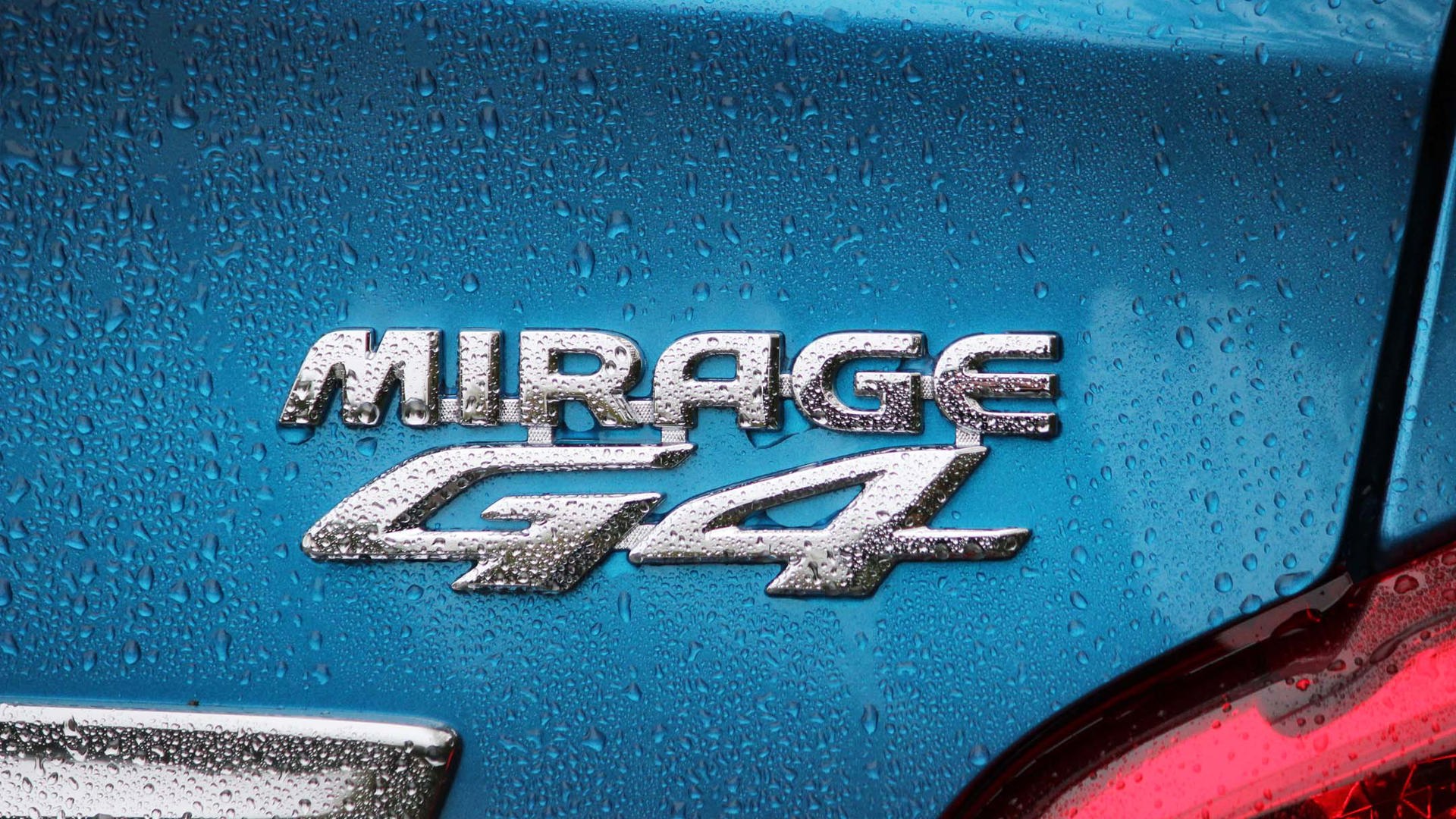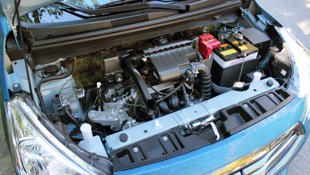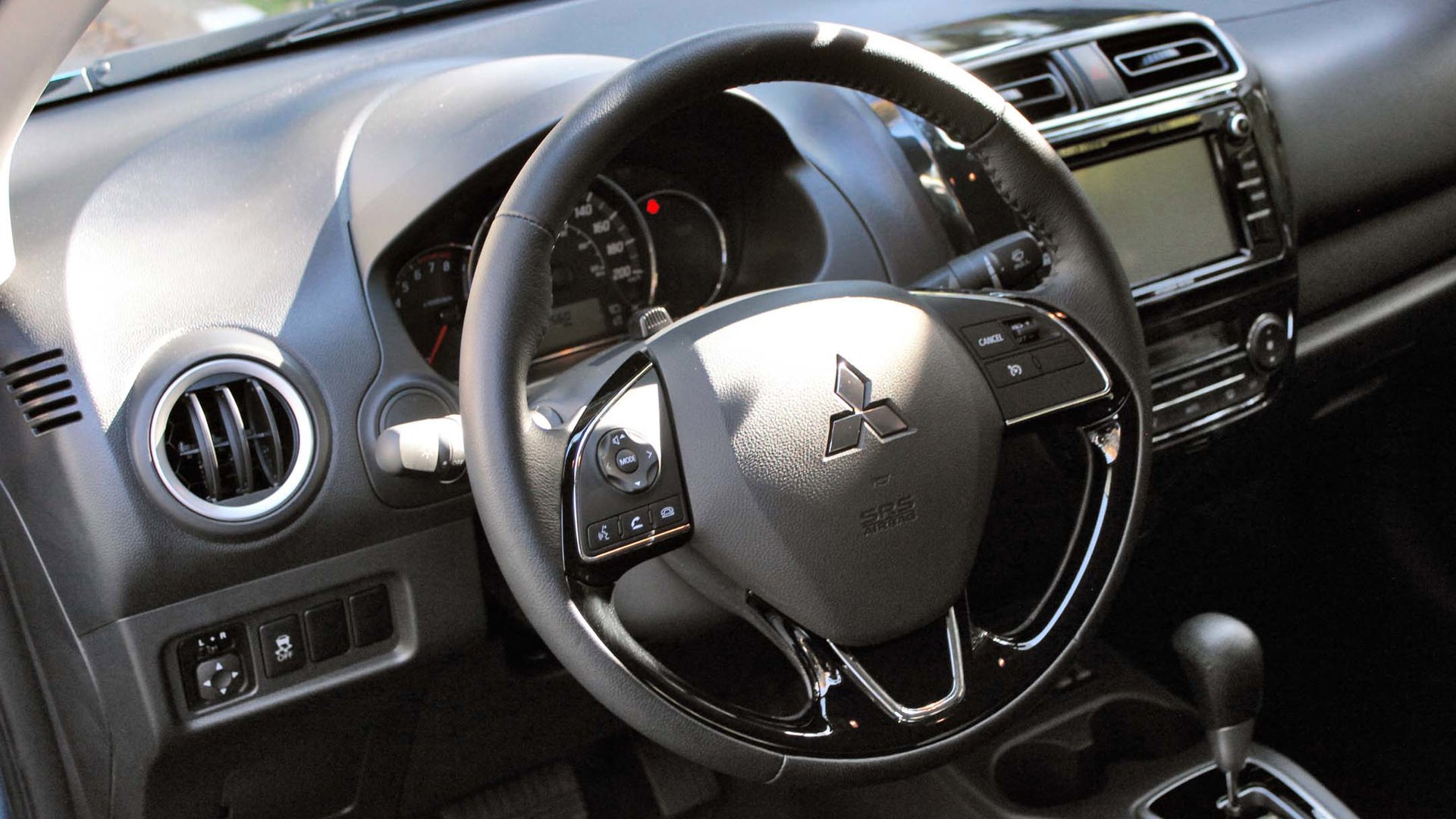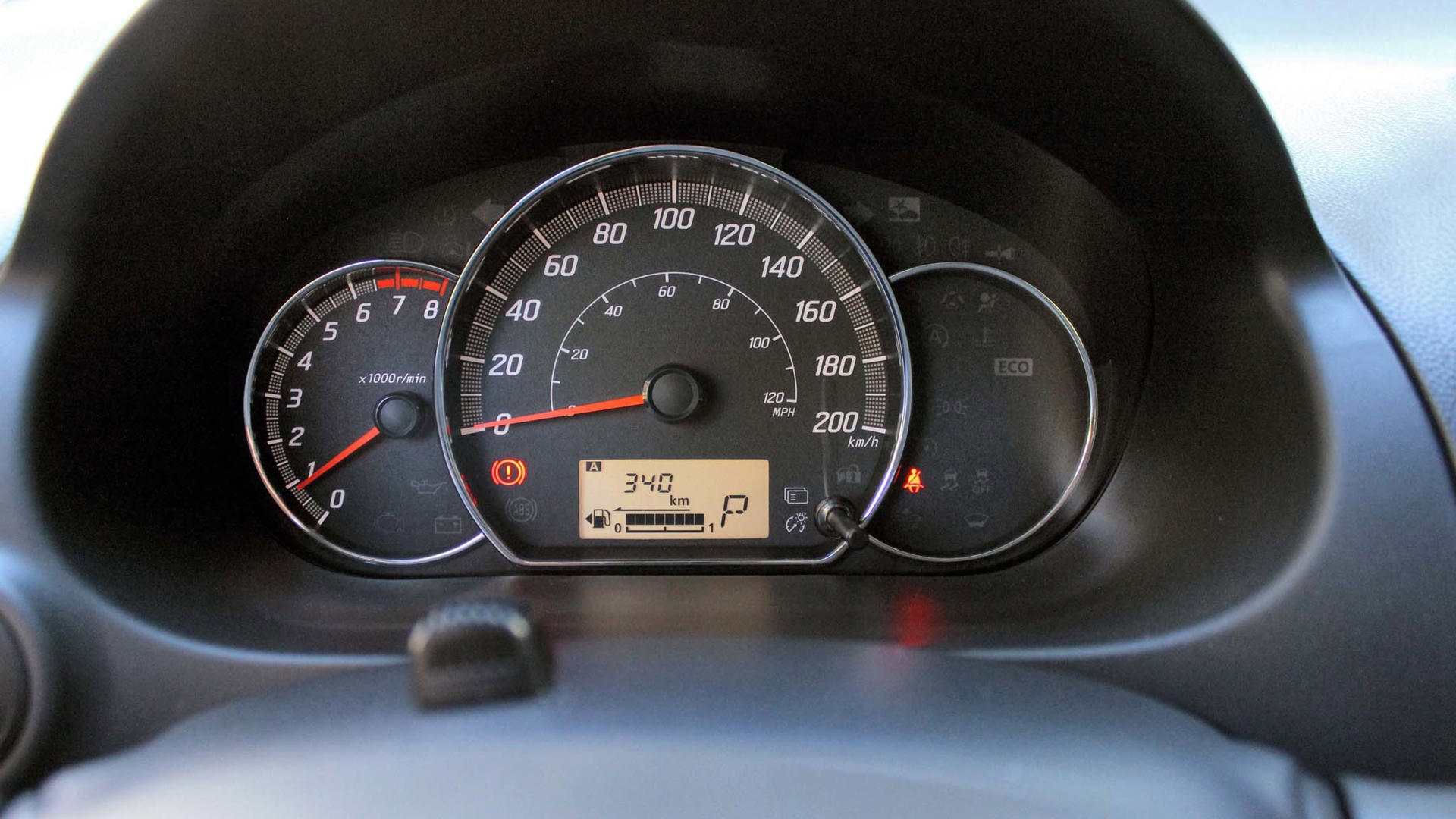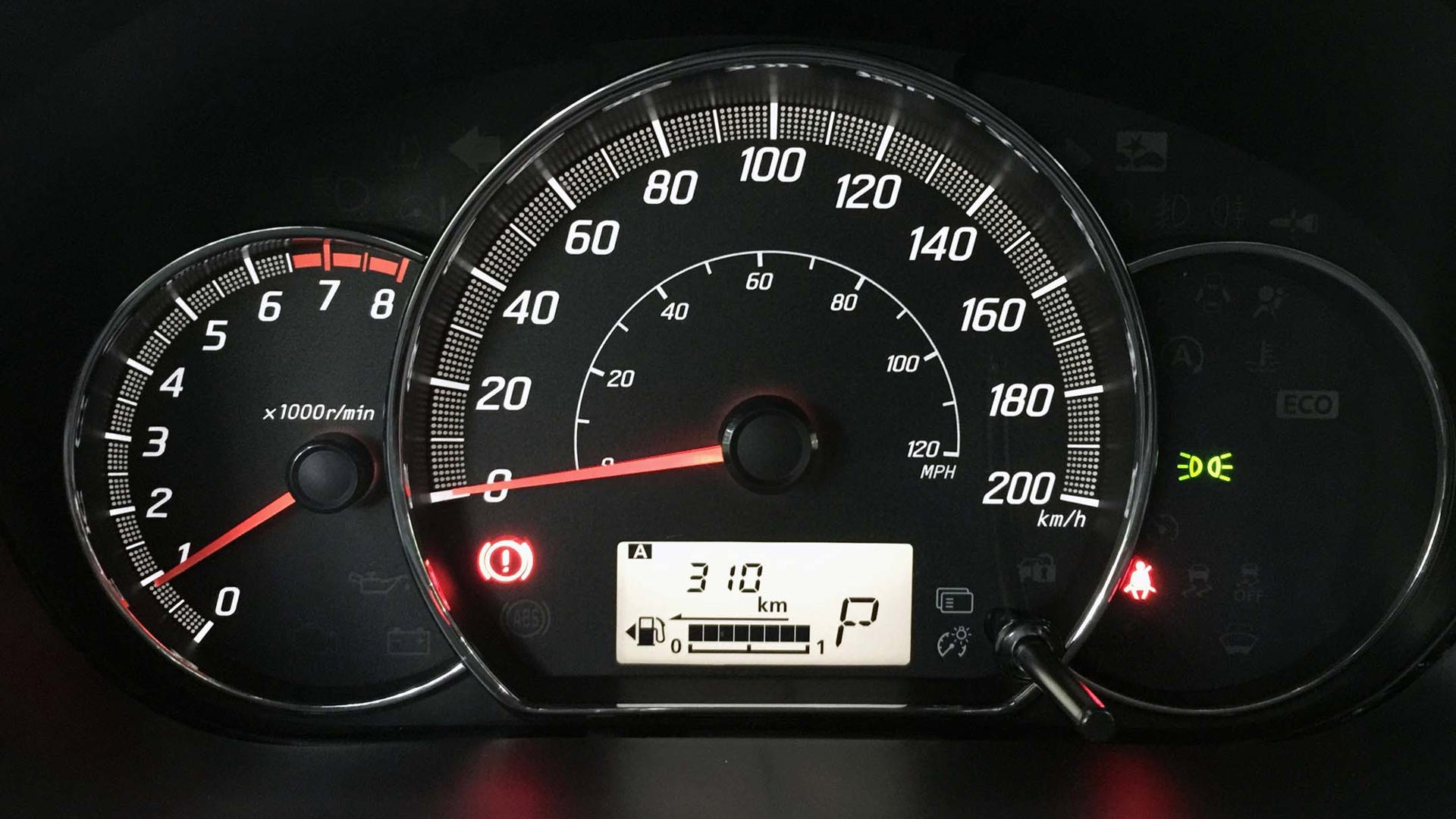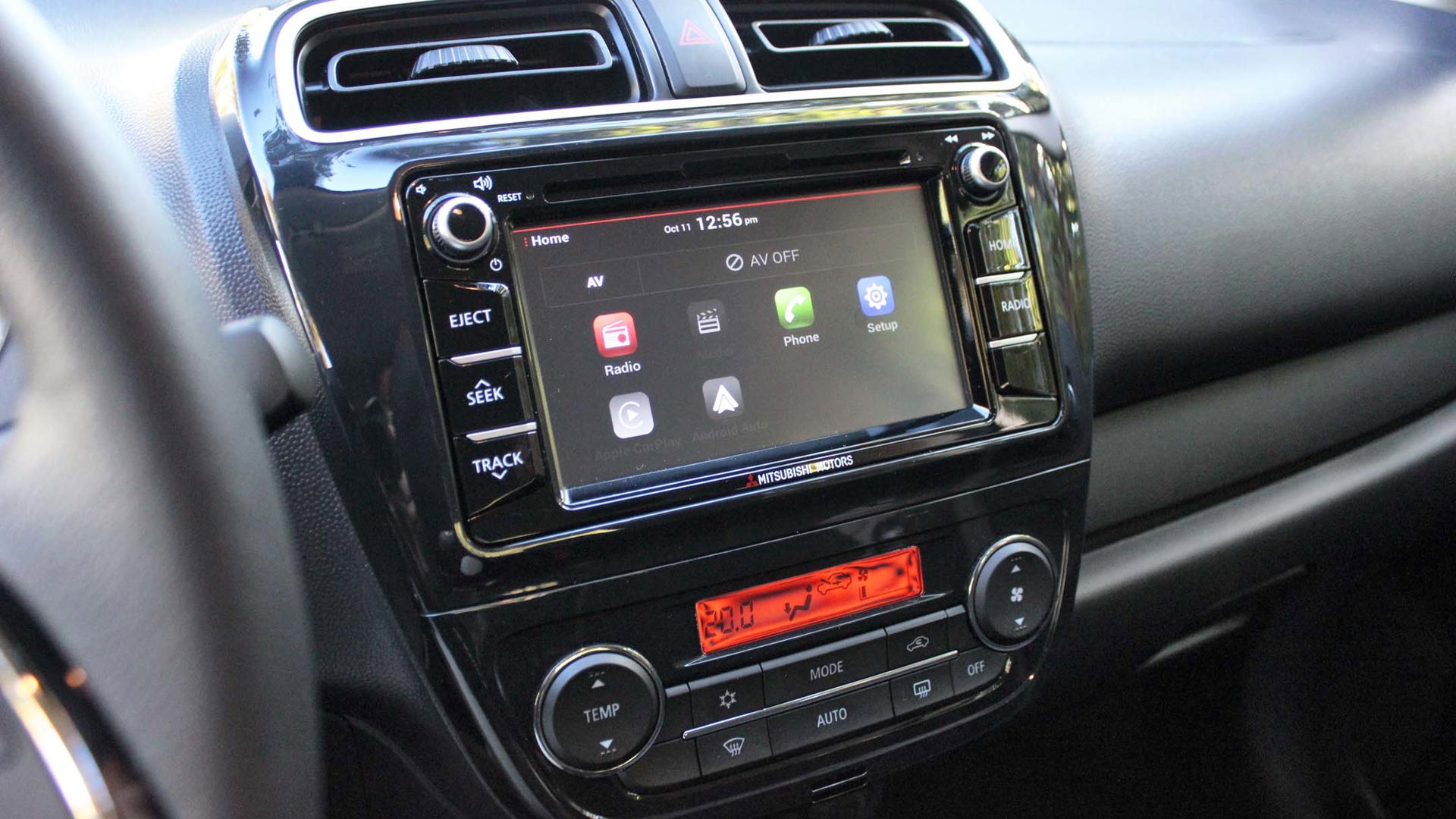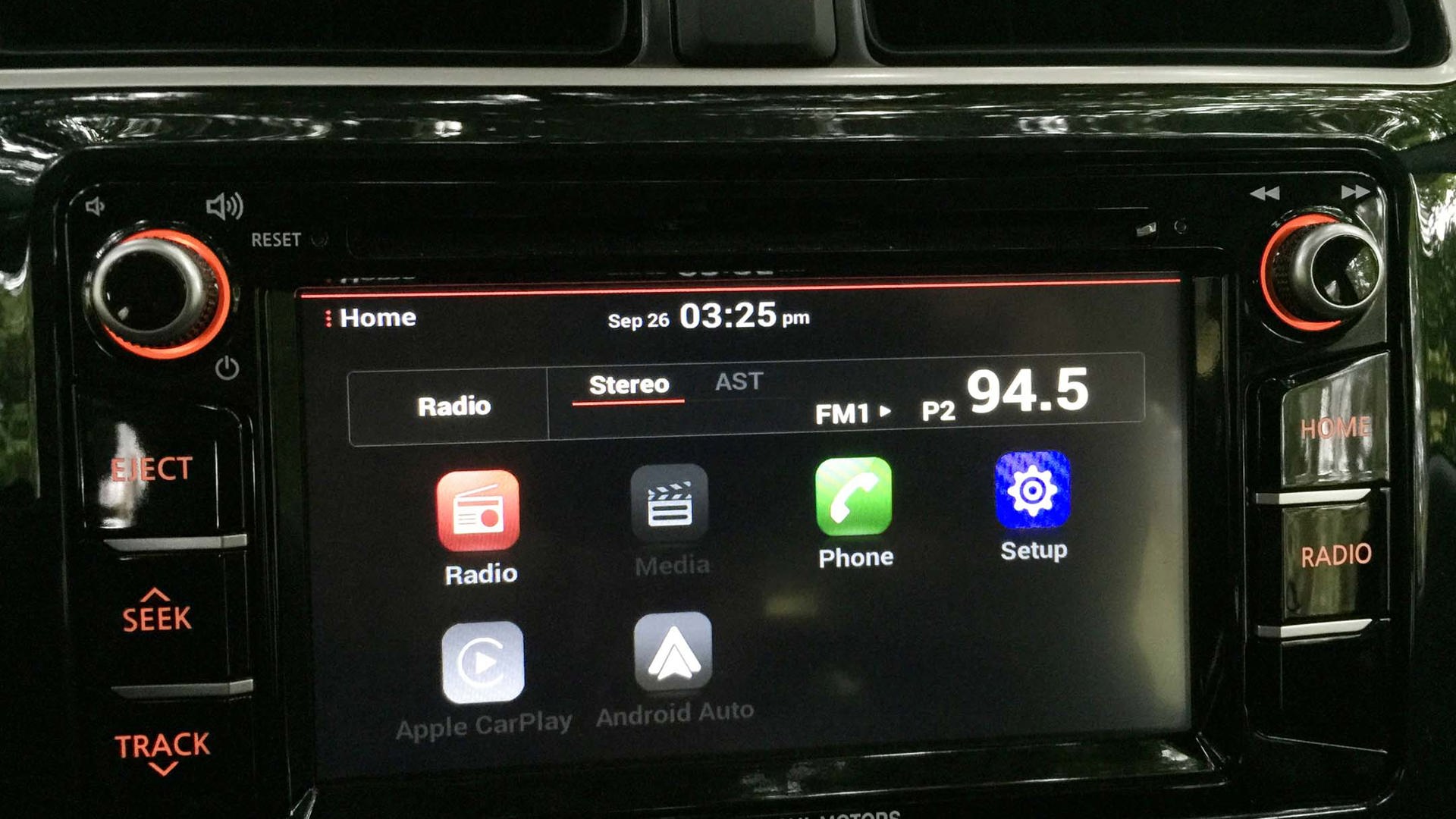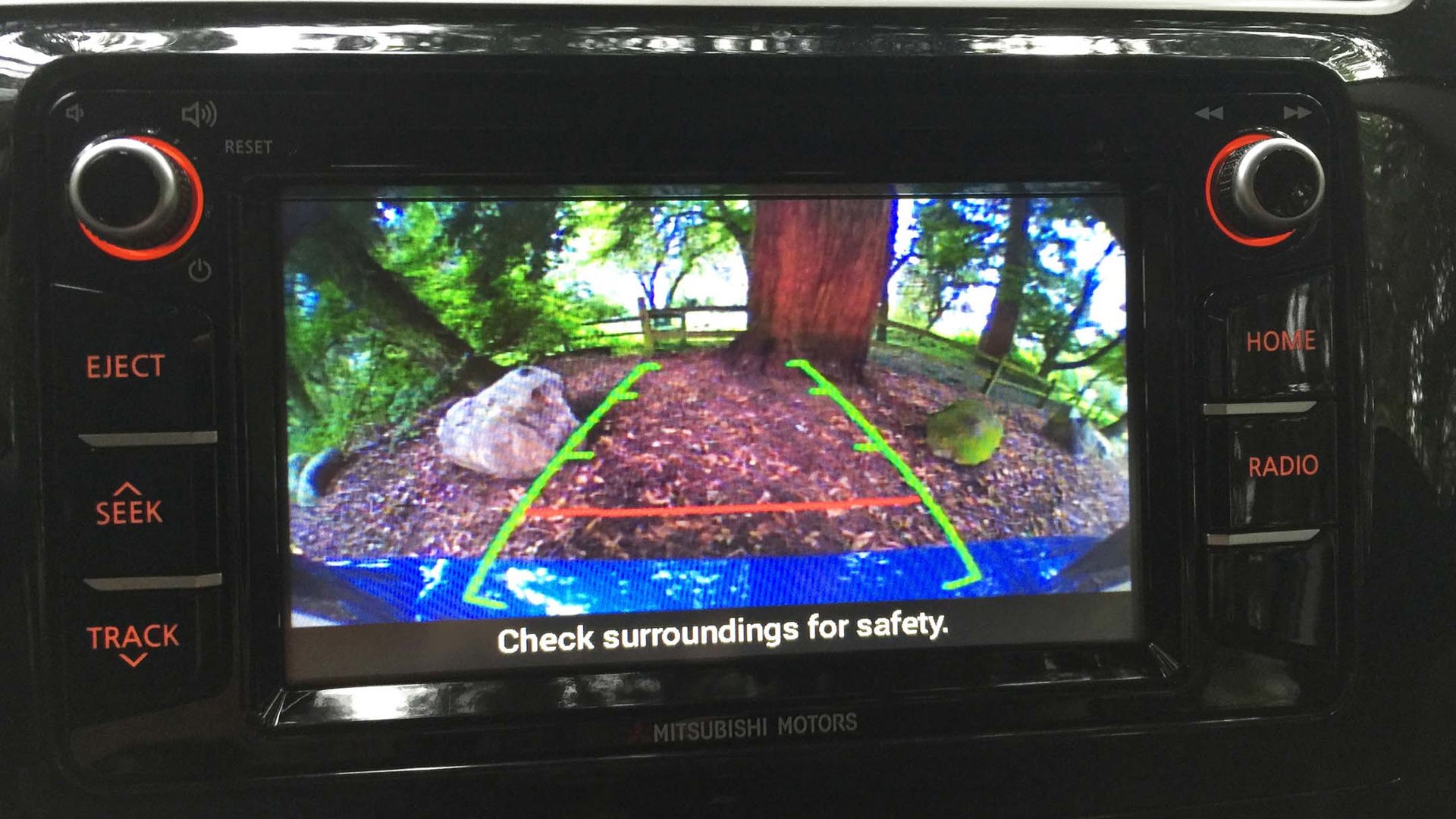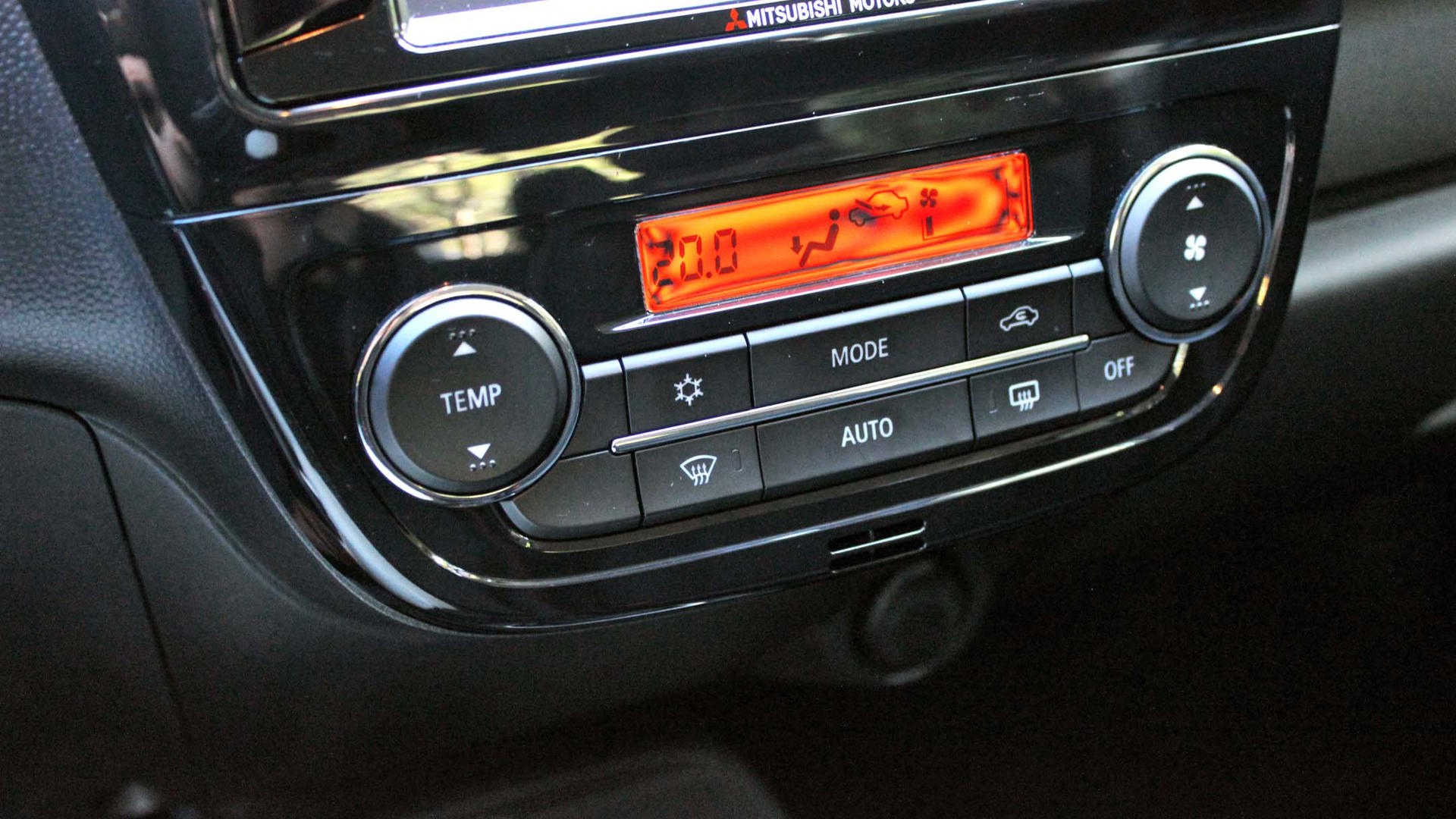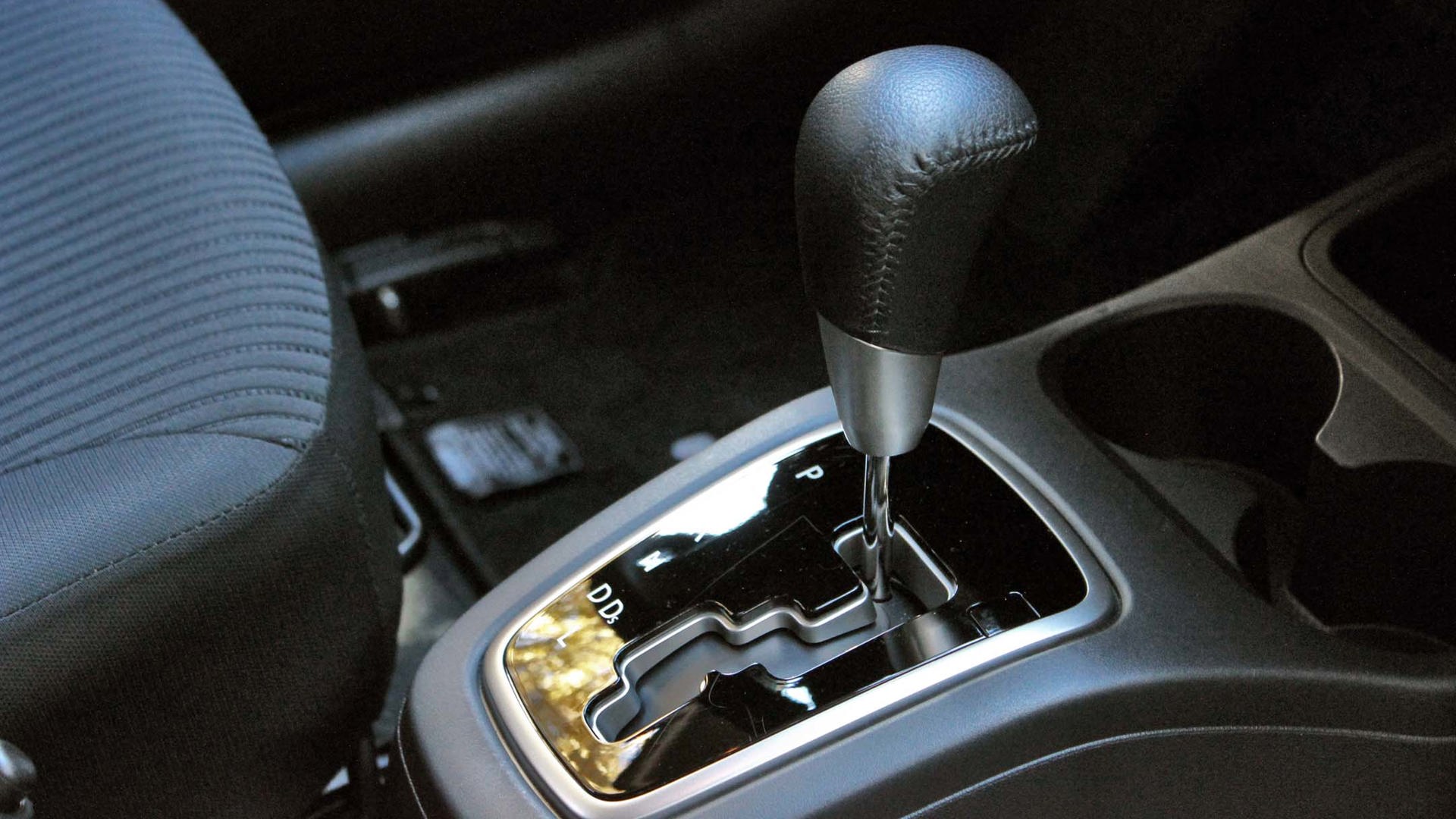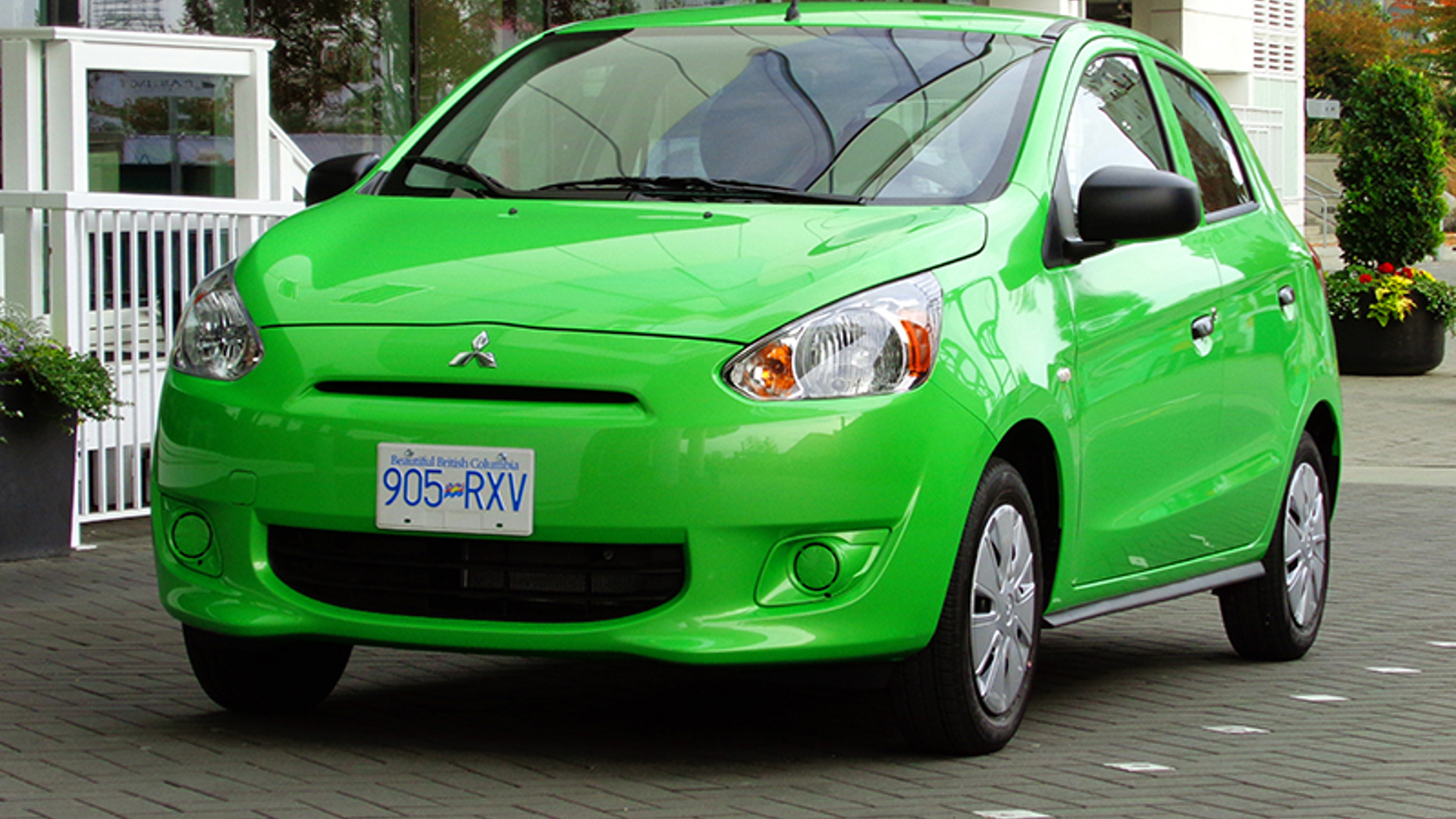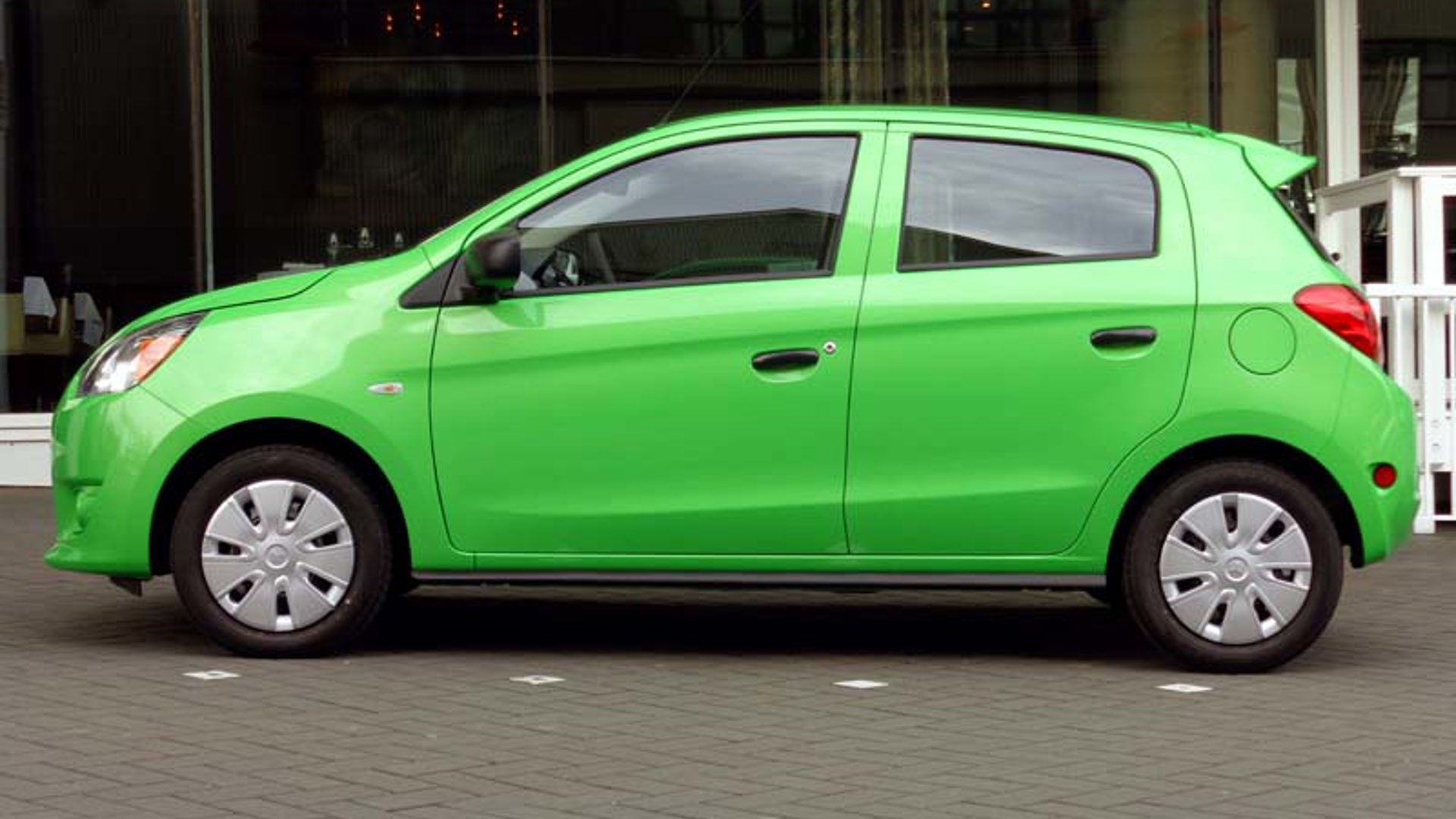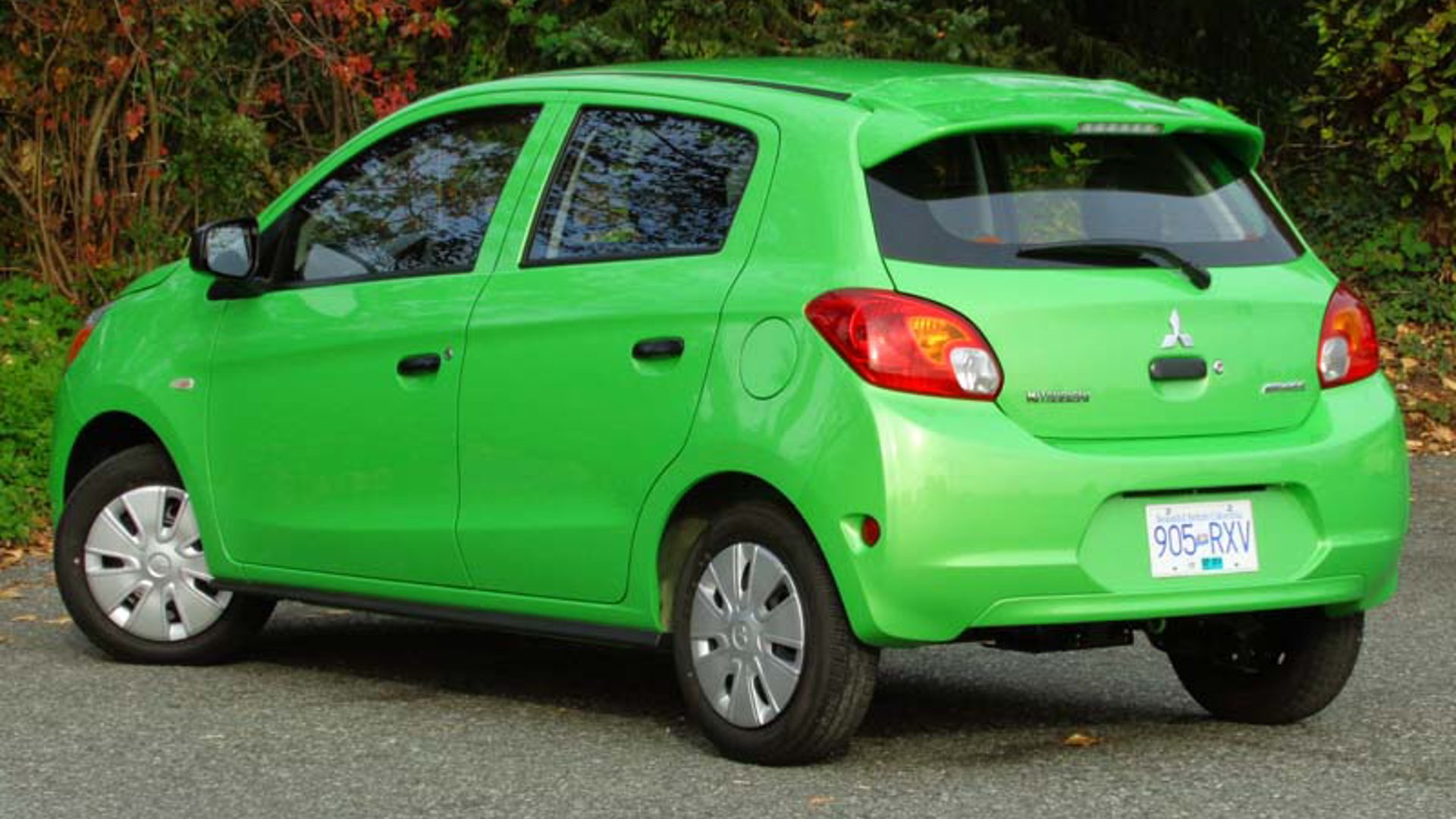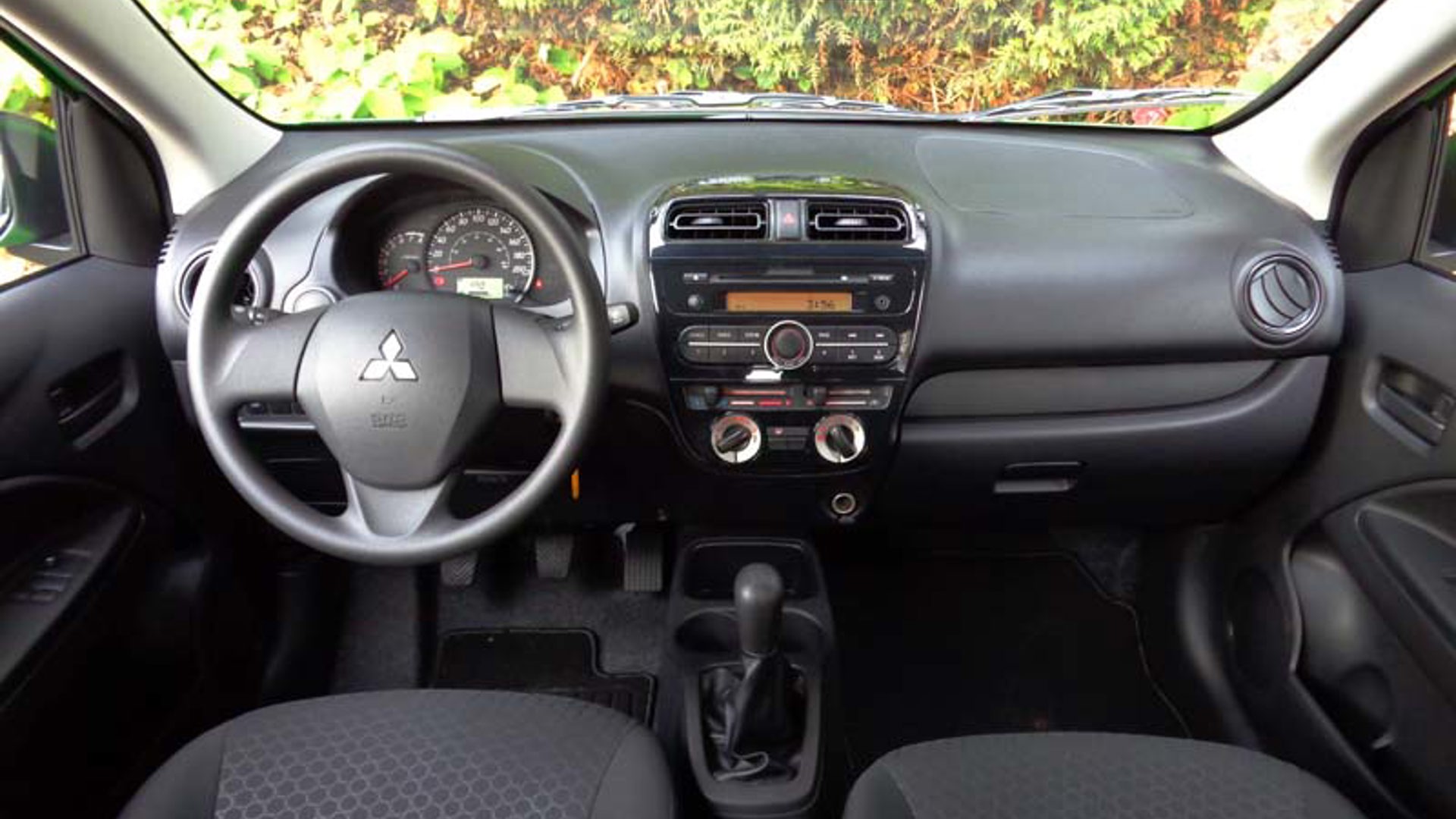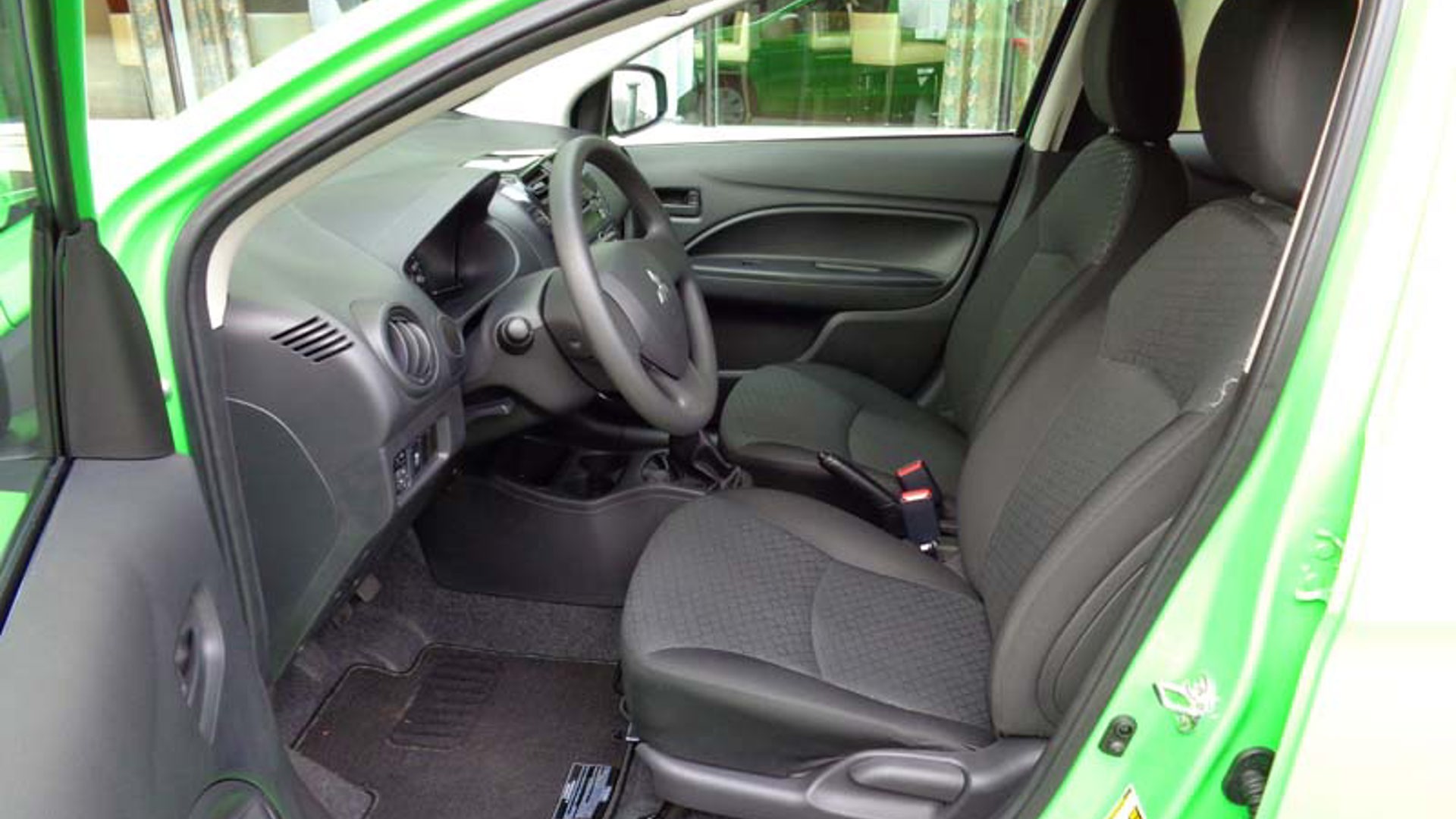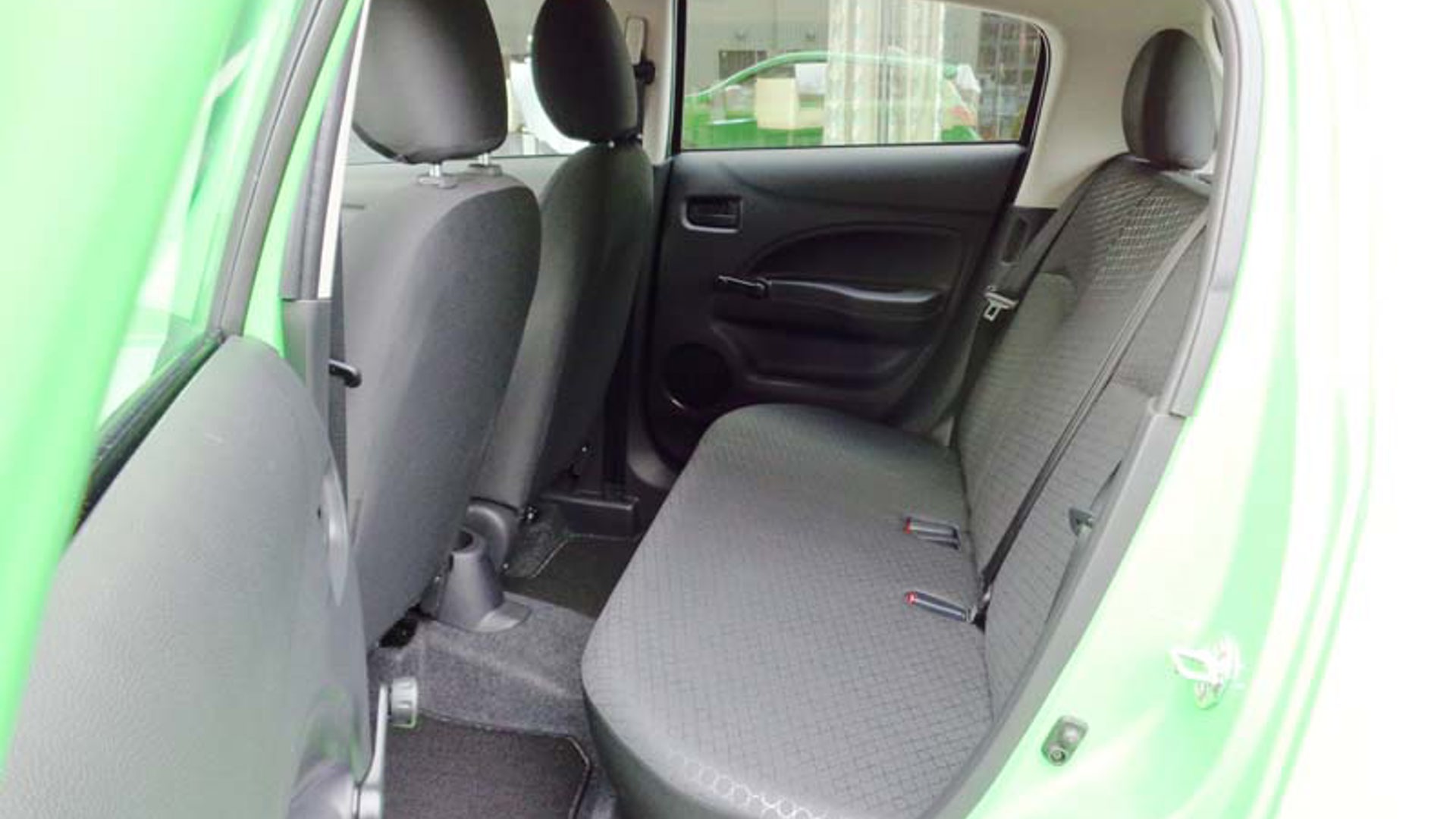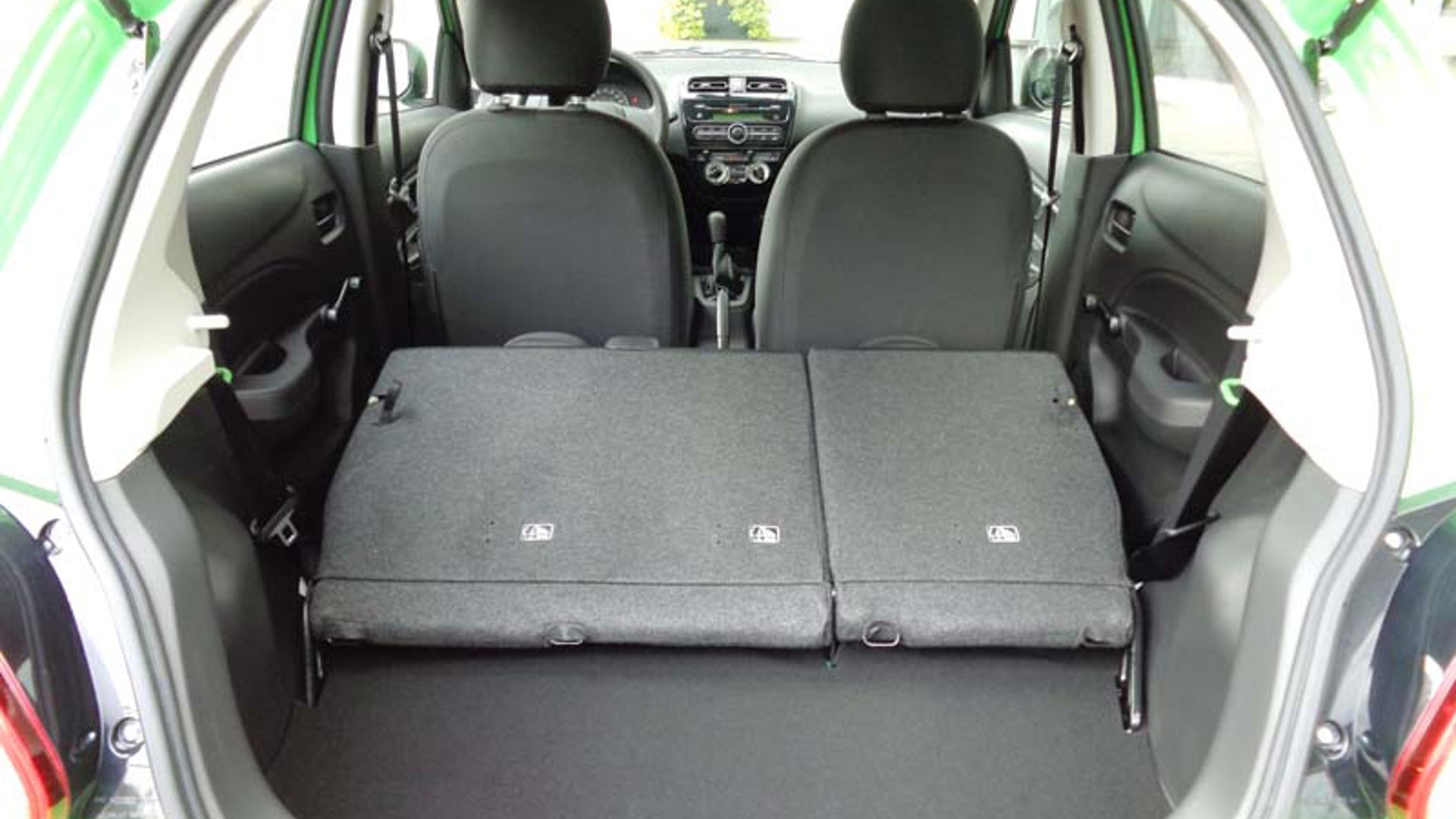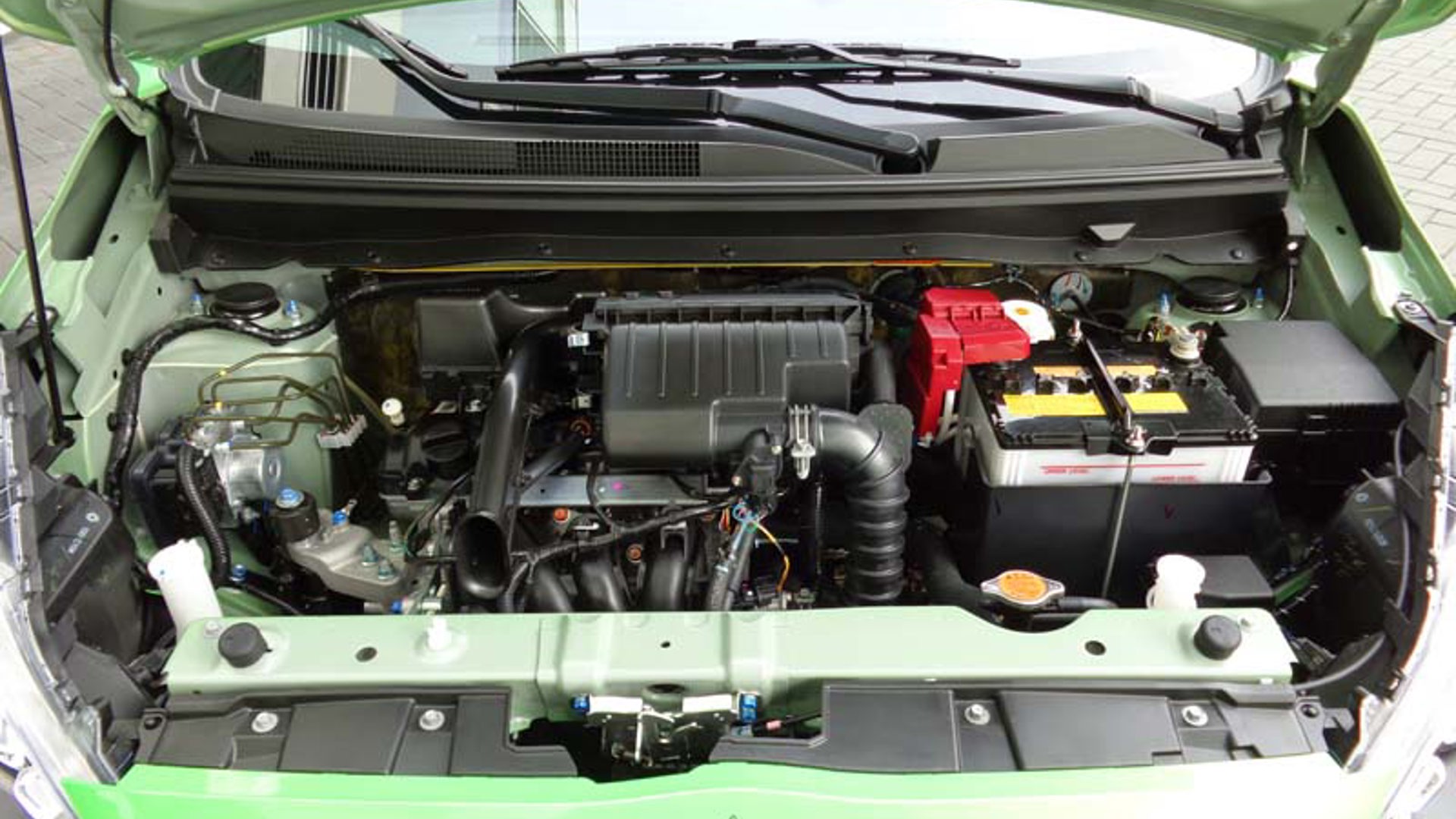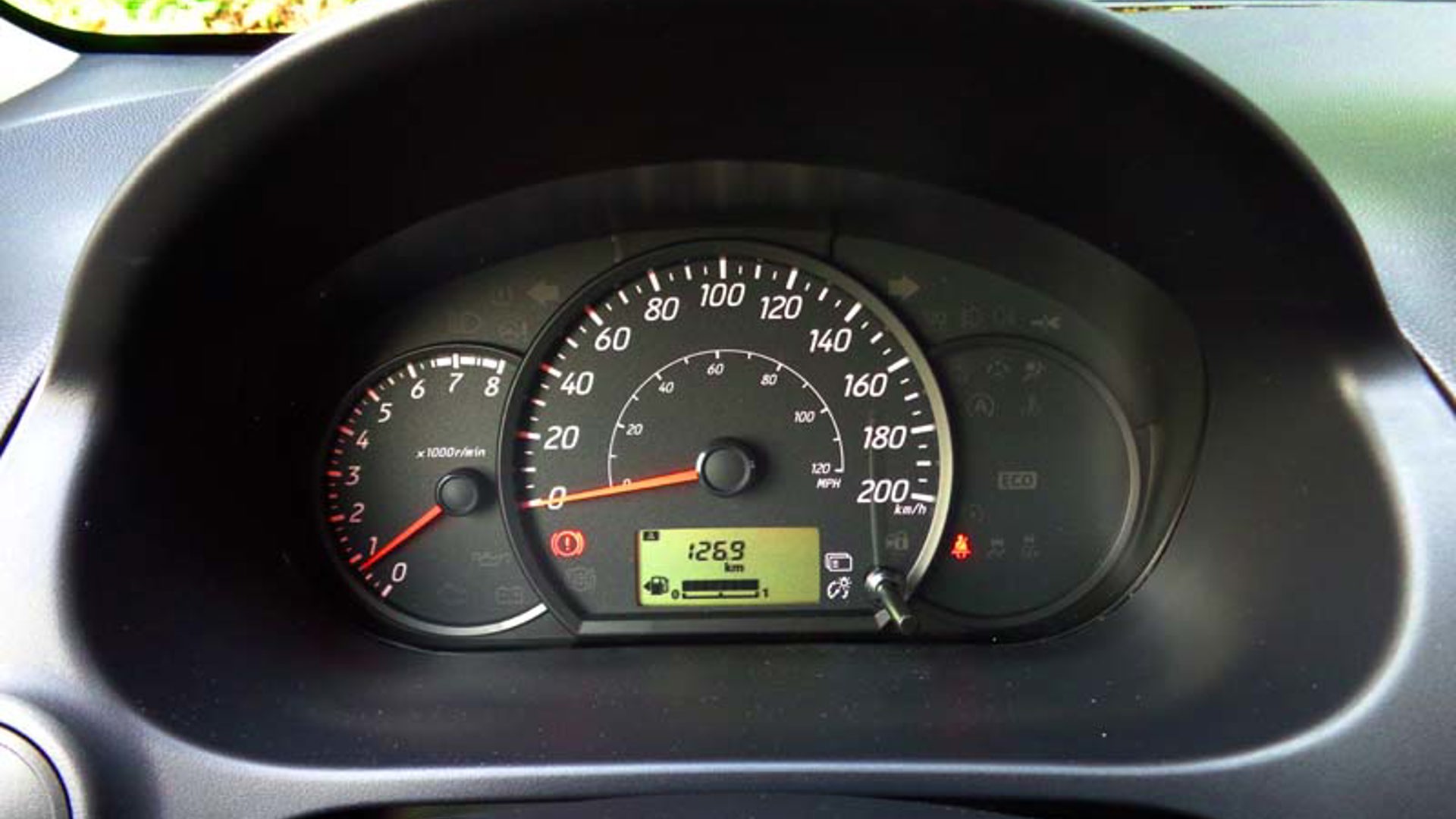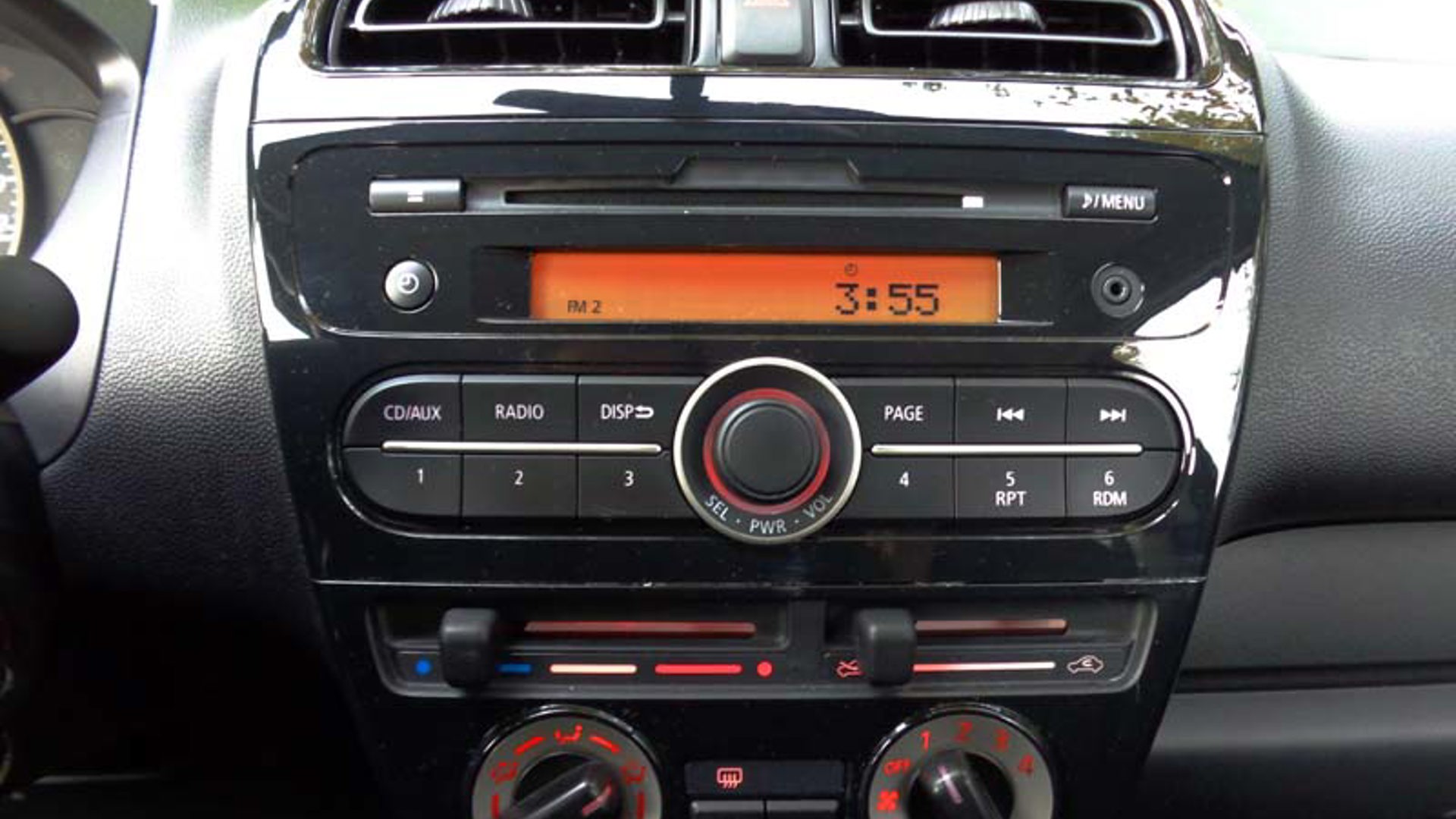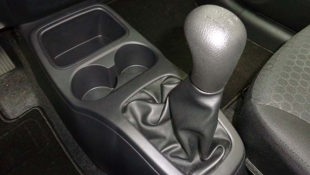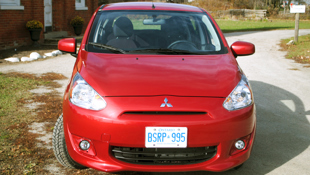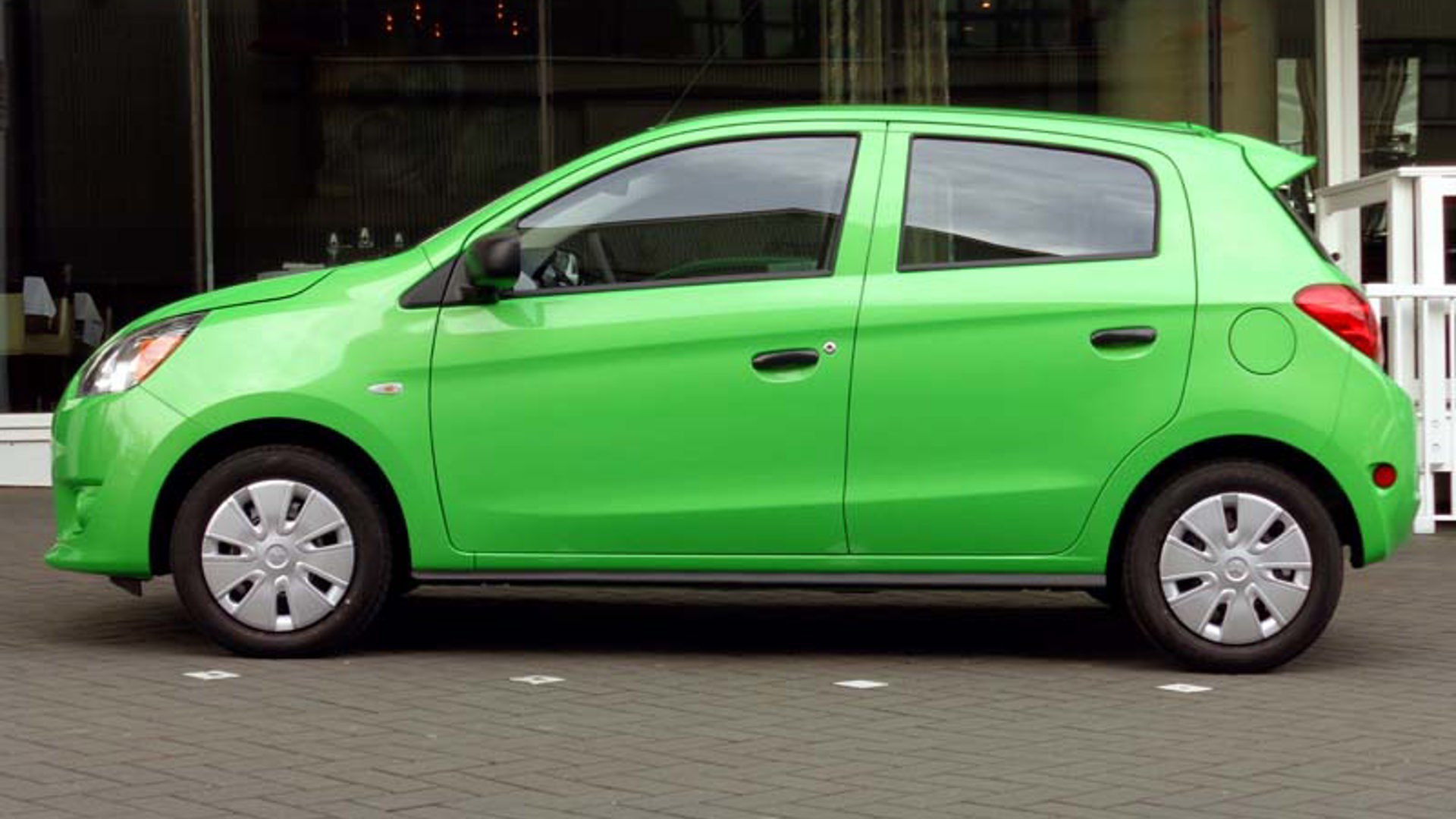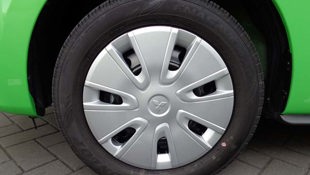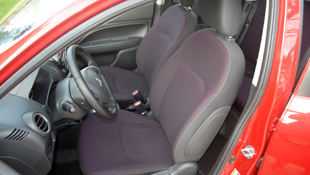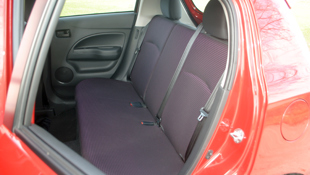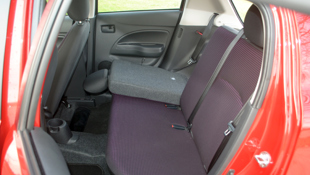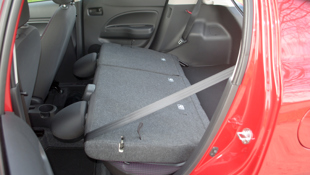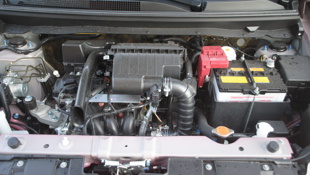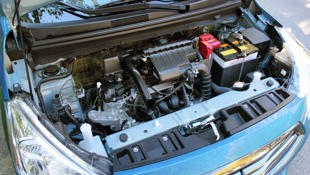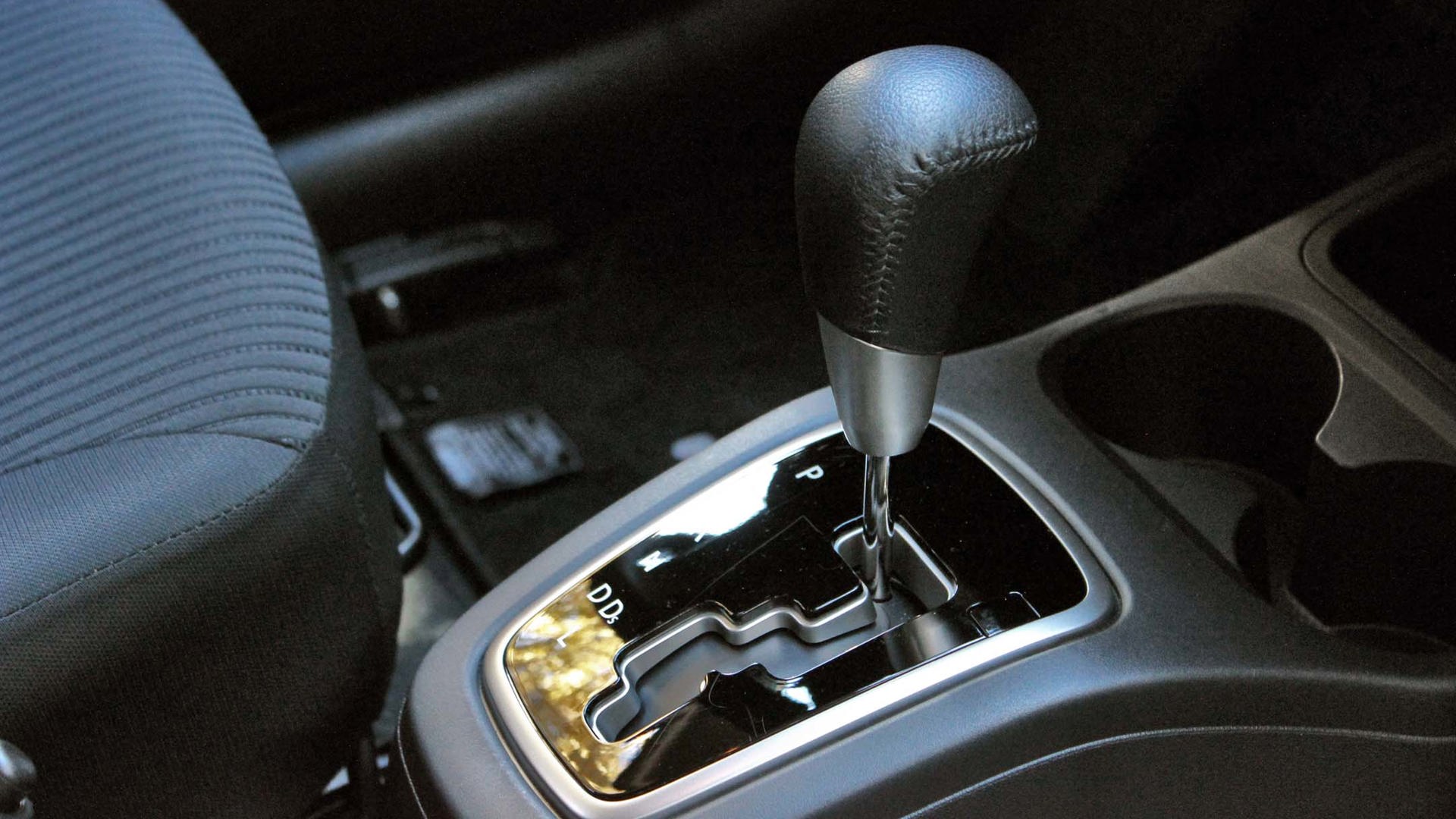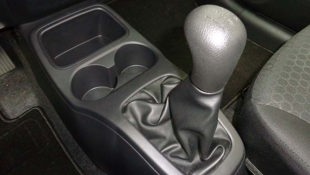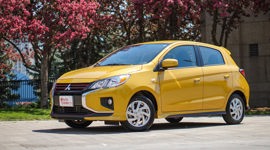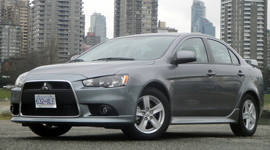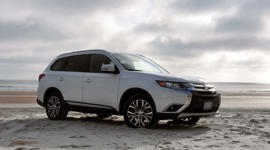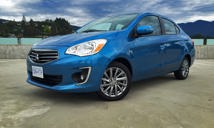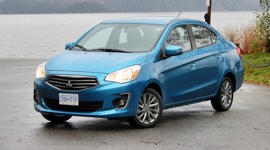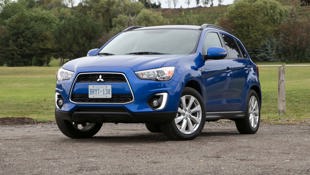Vehicle Type
Mischievous manoeuvrability, a flexible cabin, thrifty fuel mileage, good high-beam performance after dark, and relatively refined highway driving manners.
Subcompact sedan/hatchback
History/Description
With a focus on affordability, Mitsubishi brought the latest Mirage subcompact to market in 2013 for model year 2014. The brand’s new entry-level model commanded a starting price of about $12,500 in early years, saw a price drop to the $10,000 range shortly thereafter, and attracted shoppers after basic transportation and a 10 year / 160,000 kilometre warranty. Reviews were mixed – the point of this car was often missed: it lowered the barrier to new car ownership significantly and gave used car shoppers with a limited budget an option for a brand-new, warranty-backed car at a compelling price.
Initially, Mirage was offered as a five-door hatchback, though a sedan model became available. Compact and flexible, this little hatchback could be had in ES or SE trim grades, and feature content included 14-inch wheels, a 140-watt stereo, fog lamps, automatic climate control, Bluetooth, steering-wheel-mounted audio controls, leather-wrapped accents, and more – depending on the model selected.
The real appeal of the Mirage, as a used buy, is its highly affordable pricing with access to some remaining portion of the vehicle’s lengthy powertrain warranty.
Engines
Mirage was powered by a 1.2-litre three-cylinder engine with 74 horsepower. Capable of sustained highway cruising and thrifty operation, the little engine saw fuel consumption rated as low as 4.4 L/100 km, making it one of the most fuel-efficient cars in Canada. But it was also one of the slowest, with a 0–100 km/h acceleration time in the 14-second range. A five-speed manual transmission was standard, and a continuously variable transmission (CVT) was optional.
What Owners Like
Owners appreciate mischievous manoeuvrability, a flexible cabin, thrifty fuel mileage, good high-beam performance after dark, and relatively refined highway driving manners. Mirage is also loved for being cheap to buy and cheap to fuel.
What Owners Dislike
Common complaints include excessive suspension noise on rougher surfaces, elevated wind noise levels at speed, and a sludgy-feeling steering.
Here are some owner reviews.
Pro Tip
Arguably, Mirage’s most compelling model is the base Mirage ES, with manual transmission and minimal options. Boasting the promise of Mirage’s lowest-possible asking price in the used market, and lowest-possible running costs, the Mirage ES makes a good second family car, fuel-sipping commuter alternative for truck and SUV owners, or basic, simple, no-nonsense student transportation. Find as new a unit as your budget allows, and shop out a model that’s backed by the highest remaining portion of Mitsubishi’s warranty that you can afford, for maximum value.
Here’s Your Test Drive To-Do List
Check the Rear Tires
Start by checking the Mirage’s rear tires for signs of alignment trouble, which could include excessive wear, particularly on one side of the tire’s tread or the other. According to this thread, numerous owners have reported bad rear-wheel alignment on some units, which can result in poor handling, reduced safety, increased fuel consumption, and accelerated tire wear. This issue, if present, is likely caused by an out-of-spec rear axle, and would be covered by remaining warranty, if applicable. Note that some owners say dealers have (mistakenly) advised them that alignment isn’t covered by warranty, but the thread linked above suggests otherwise. If you have any doubts, or aren’t sure how to check for signs of a bad alignment, have a professional technician check the vehicle.
Check the A/C
If equipped, confirm that the Mirage’s air conditioner is in proper working order, and that it pumps an uninterrupted stream of cool air into the cabin upon request. If that’s not the case, one of several problems is likely, ranging from a refrigerant leak to an A/C compressor suffering from a bad bearing, to a plugged cabin air filter. Most owners across all makes and models of vehicles in general do not change their cabin air filter, causing it to plug up. This is a leading cause of air conditioner failure. Here’s some more reading on the topic. And some more.
Listen to the Brakes
On your test drive, be sure to spend a few moments with the stereo and climate control fan off, and listen closely for unwanted sounds as you brake from a variety of speeds with light, moderate, and heavy pedal pressure. Note that a scraping or metallic “squealing” sound, possibly accompanied by a lumpy pulsation from the pedal or a spongy / weak pedal feel, are signs that the braking system in the Mirage you’re considering is in need of some attention. Here’s a little more information.
Check all Electronics
Spend a few minutes running through all on-board features within the Mirage that run on electricity. Confirm all cluster and panel lighting is working properly; that all steering-wheel-mounted controls (if equipped) are functional; and that the Bluetooth system, climate control system, and multimedia system are all in proper working order. Now’s the time to keep your costs down, by ensuring that the Mirage you’re considering isn’t suffering from any surprise electronic problems. In this check, be sure to confirm that the wipers, and wiper squirters, are in proper working order, too.
Warning Lights
Check the instrument cluster of the Mirage you’re considering for any warning lights, malfunction lights, or a Check Engine light (CEL). If any are illuminated, the vehicle has detected a problem in one or more systems, and is inviting you to have a diagnostic scan performed with a OBD2 code reader to identify what that problem is. Don’t guess as to the cause of the problem causing the light to illuminate: it could be something minor, or something serious and expensive. Do not disconnect and reconnect the vehicle battery hoping to effect some reset of the warning light.
Misfire
If a Check Engine light is present, and a diagnostic scan reveals a Misfire code, then there’s a problem with the Mirage’s engine. In this rare but notable case, the cause of the misfire is a simple bit of corrosion on an ignition-system wire, which had rubbed through its insulation and rusted. This is a simple fix. Take this case as an illustration of one of many reasons that a CEL may illuminate.
Airbag System
On 2014 and 2015 models, a wiring harness located near the driver footrest may experience excessive corrosion due to exposure to wintertime salt and moisture brought on board by wet footwear. Corrosion to this component could eventually cause electronic issues, including an airbag (SRS) warning light. Look for this warning light: if it’s illuminated, the airbags may not deploy properly in the event of a collision, which is a safety concern. This issue was addressed by a safety recall, and dealers will inspect and replace the wiring connector if needed.
Howling Sound
At certain speeds, and fairly consistently, some owners have reported a howling noise that invades the cabin. If detected on your test drive, the Mirage you’re considering may be suffering from a bad wheel bearing, which will need professional attention to replace. Here’s some more information. Note that ignoring this problem and allowing the wheel-bearing to fail outright can cause serious problems, or even a loss of control and associated accident.
FAST Key Problems
Some Mirage models feature Mitsubishi’s FAST key system, which gives drivers proximity-based keyless access to the ignition system, provided the key is on their person. Some owners have reported fussy, inconsistent operation from this system, or total non-functionality. Numerous causes are possible, and dealers may be able to reprogram the system to fix it. Some owners have successfully fixed FAST key problems by ensuring the key fob is kept away from their smartphone or other radio-emitting devices, or by removing and replacing the system fuse to reset it. Here’s some more information. On your test drive, confirm that both available FAST key fobs, if applicable, work consistently with the vehicle.
Other Useful Information
Warranty
Mitsubishi’s lengthy powertrain warranty is a key reason to consider purchasing a used (or new) Mirage, though used shoppers are advised to confirm that that warranty is in good standing before they buy. Obtain full service records, indicating that no fluid changes, oil changes, or other required maintenance intervals have been skipped or stretched, as this can compromise remaining warranty coverage. Further, and especially if the warranty on the used Mirage you’re considering is nearing its end, be sure to report any issues you detect to a dealer for inspection and documentation without delay, as this can help speed future warranty repair claims, should they be required.
Recalls
The Mirage has a short list of recalls. If you have the VIN, you can ask a dealer if any outstanding recall repair work is pending on the model you’re considering. Note that you may require permission of the owner to look up this information.
Assume the Worst
If you’re shopping on a hard budget, minimize the chances of unexpected costs by approaching any used Mirage you’re considering assuming that it needs new tires, brakes, a tune-up, fluid change, and some suspension work – until you have proof to the contrary. This proof can come from your own assessment from a test drive, a look at seller receipts and service records, or a pre-purchase inspection (PPI) by a trained technician, ideally at a Mitsubishi dealer. Now’s the time to ensure the vehicle’s seller isn’t trying to pass off an upcoming repair or service bill on to you.
Verdict
Mirage should prove cheap to run and easy to own, though shoppers should take steps to confirm that the vehicle’s warranty is fully intact and in good standing, and that the air conditioner, rear alignment, and wheel bearings are in sound shape before agreeing to buy.
Crash Test Ratings:
IIHS: results here.
NHTSA: 4/5 Stars
